While most people visit Egypt for the historical monuments and the ancient temples, let’s not forget about the gorgeous coast and the stunning underwater sea life of the Red Sea, the relaxing experiences at the resort towns, and the amazing food it offers. Egypt can be both for adventurers who’re seeking challenging yet immersive experiences and for families, who’re looking for checking bucket list items and enjoying tranquil experiences while relaxing amidst nature. Egypt is an intriguing country to explore and there’s a lot to see and do in Egypt in 10 days for all types of people seeking any type of experience.
Our Egypt trip was with our senior parents, so we decided to create an itinerary that provided a great mix between experiencing the nature, visiting ancient sites, learning about the Egyptian civilization & history, along with time for relaxation and unwinding. We decided to keep the itinerary a bit ‘light’, which is very contrary to how I usually plan my trips. Having said that, I was very happy overall with how the trip turned out (barring my mother’s accident, leading to a bad collarbone fracture, but more about that later).
Cairo airport – hotel transfer: While Uber is popular and reliable in Egypt, language problems are rampant and on the first day when you arrive in a new city, it can be overwhelming to explain your location to an Uber driver given all constraints. Public taxis are corrupt and will overcharge you, so we found an extremely convenient, reliable & reasonable solution to book our airport transfers called Welcome Pickups.
Important note: Egypt is NOT a wheelchair friendly destination, or a stroller friendly destination for that matter, in most parts. This might be worth noting for people travelling with families – children or older members.
Day 1: Cairo
As underwhelming as it might be, any Egypt itinerary is bound to begin at the capital city of Cairo. On day 1, one of the key places to explore is the National Museum of Egyptian Civilization: NMEC. This is the perfect introduction to the Egyptian civilization and history and the mummies hall is said to be specifically intriguing. For several years now, Egypt has been working on opening a much larger museum, called the Grand Egyptian Museum, which was expected to open in 2022 but has been delayed several times, with a new opening date in 2023. Expected to be the largest museum in the world, it is in Giza, very close to the pyramids and is probably going to be an amazing experience. The final opening date, however, is still awaited!
The NMEC closes at 5 pm, so make sure to get there by early afternoon to allow at least 2 hours to explore the relics and artefacts in this museum. From here, head to Old Cairo (or Coptic Cairo, as it is called), which is not too far from NMEC. This area was known to be the stronghold of Christianity in Cairo, and is home to a fortress, churches, and synagogue, predating to times when the pharaonic religions of Ancient Egypt had died out and Islam had not yet arrived. This part of Cairo is unlike any other part of the country and is an enclosed complex meaning there’s a distinct entrance/exit, heavily monitored by tourism police. Once inside, it is a pedestrian only area, and the key places you can explore on foot are: Fortress of Babylon, Hanging Church and other smaller churches, Synagogue, St George Greek Orthodox Church, and several cemeteries. Keep about 2 hours to explore this area. There aren’t any restaurants here as such except small kiosks to grab drinks and a snack, so don’t expect to sit here and enjoy a leisurely meal.
If you still have some time in the day, head to El Moez Street (it’s not walking distance, so you’ll have to take a taxi), located in an area referred to as Historic Cairo, a 1-km long pedestrian street surrounded by Islamic architectural treasures such as mosques, madrasas, hammams and fountains. Adjacent to this street is the famous Khan el Khalili bazaar, a chaotic shopping area lined with several shops selling numerous souvenirs. A rich and vibrant market, you’re bound to want to buy several things here, and the products are horrendously overpriced, considering the popularity of this place. Nevertheless, even if you don’t wish to shop, this medieval-style mall makes for a great place to take photos and soak in the culture & observe people.
End the day with dinner on to the Nile. Some recommended restaurants which offer good, reasonably priced food along with great views and a relaxed vibe right next to the Nile are: Carpaccio Lounge, Happy Dolphin or one of the restaurants on the West Bank Promenade.
Recommended budget hotel stay in Giza, with a terrace that offers excellent view of the pyramids and the Great Sphinx: Hayat Pyramids View Hotel
Day 2: Giza, Memphis & Dahshur
On this day, we took a guided full day private tour of three key areas housing ancient pyramids: Giza, Memphis & Sakkara, through a company called Emo Tours, for a reasonable price of $20 per person. The tour started from Giza, located on the west bank of Nile River from Cairo. This is where the Great Sphinx is also located, and these are the most popular pyramids visited in all of Egypt. However, these are not the only preserved pyramids in the country. They might be the most spectacular though! There was time when tourists were allowed to climb these pyramids freely but that is now banned. One can enter any of them with a purchase of a separate ticket but none of these seem to have very impressive interiors which is why our tour guides recommended us to keep our curiosities on hold until the next destination of the day – Dahshur pyramids.
We spent about 1.5 hours in the area taking loads of photos of these impressive structures including the Great Sphinx. From here, we took the minivan to Dahshur. Home to several pyramids, this ancient site is quite underrated and doesn’t see half as much crowds as the Giza pyramids. While there’s no doubt that the Giza pyramids are a lot more impressive, Dahshur pyramids are remarkable in their own way. These are what you call ‘step pyramids’, and were built way before the ones at Giza, as a learning experience for how to make more smooth shaped ones. 3 key pyramids are worth visiting here: the Bent Pyramid, the Red Pyramid and the Black Pyramid, each having a unique look. You can even enter the pyramids free of charge and I highly recommend you do it. While it’s not the easiest to go inside the narrow and low tunnels that take you inside the pyramids and not recommended for those with back or knee problems, mobility issues or claustrophobia, it’s an interesting and intriguing experience. While there’s an adventure element for sure, there’s not much inside – the chambers are all just empty rooms.
Unfortunately, we couldn’t continue our journey from here to Saqqara and Memphis as this is where my mother lost her balance while climbing down the stairs of the pyramid and tumbled on the stones, breaking her collarbone. Our next destination ended up being the hospital, unfortunately.
Memphis was the ancient capital of Egypt and houses many archaeological remains including Saqqara’s step pyramids. While we missed visiting it, the colossal statue of Ramses II and the great Alabaster Sphinx are known to be some impressive sights to see in this area, apart from the necropolis at Saqqara, dating back to formation of Pharaonic civilization and the limestone step pyramid of Djoser, the oldest pyramid to be constructed.
The tour lasts about 8 hours and will drop you back to your hotel, so you still have sometime in the evening to explore Cairo city, should you have the energy and the motivation for it! I highly recommend walking into one of the streetside small restaurants to try their Koshari. It’s the best Egyptian dish I have had so far (surprisingly vegetarian!) and the local, small, streetside eateries are the best places to try it.

Sunset at Giza (view from our hotel)
Day 3: Aswan
Egypt is a huge country and Aswan is quite a long distance away from Cairo. You can either take an overnight sleeping train, but the journey lasts about 13hrs and costs $80 per double cabin, OR a flight that lasts about 1.5 hours and costs double. Since we were with our parents, we decided that convenience was more important than the budget, and we chose to fly from Cairo to Aswan.
Aswan is also the starting point of your Nile Cruise. We chose the 4D 3N cruise which we felt was perfect as we managed to see the key sights while getting some time to relax on the sun deck of the cruise. The cruise usually boards people around 12 pm so if you’re arriving in Aswan from an early morning flight or an overnight train journey, you can choose to begin your cruise on the same day. However, I highly recommend that you spend a day in Aswan because there are some very interesting sights to see here which you’re likely to miss if you board the cruise straightaway.
If you do plan to spend the day in Aswan, then one of the things I highly recommend you do (unfortunately, I missed it), is taking a motorboat to the Nubian Village. You need only half a day for this, so it’ll be perfect if you do this as the first thing after you arrive in Aswan. While there are several colourful Nubian villages in Egypt, one of the most popular ones is only 45 minutes by boat from Aswan. You can spend about 2 hours in the village walking around and relax at a restaurant or café to enjoy the local cuisine.
Recommended overnight budget riverside stay in Aswan: Hapi Hotel
Day 4: Nile Cruise from Aswan
We booked our Nile Cruise through Viator, and it was operated by a company called Oceanus Tours & Travels. The cruise was for 4 days, 3 nights, and included several tours during the 4 days. When you book the cruise through a company, what you pay for is the cruise itself + all the meals, starting from Lunch on Day 1, ending with Breakfast on Day 4. Each tour that you choose to take must be paid for separately, which is a good thing because you may want to go on some and skip others.
Our Nile Cruise booking included a visit to Abu Simbel in a minibus and Hot Air Balloon Ride in Luxor on the last day, but you have options to book just the cruise and book / pay for these separately if you wish to experience them at a later stage. I highly recommend booking them in advance, though. We paid $400 per person for it, which I found very reasonable. The quality of the cruise, the food, and the service was excellent!
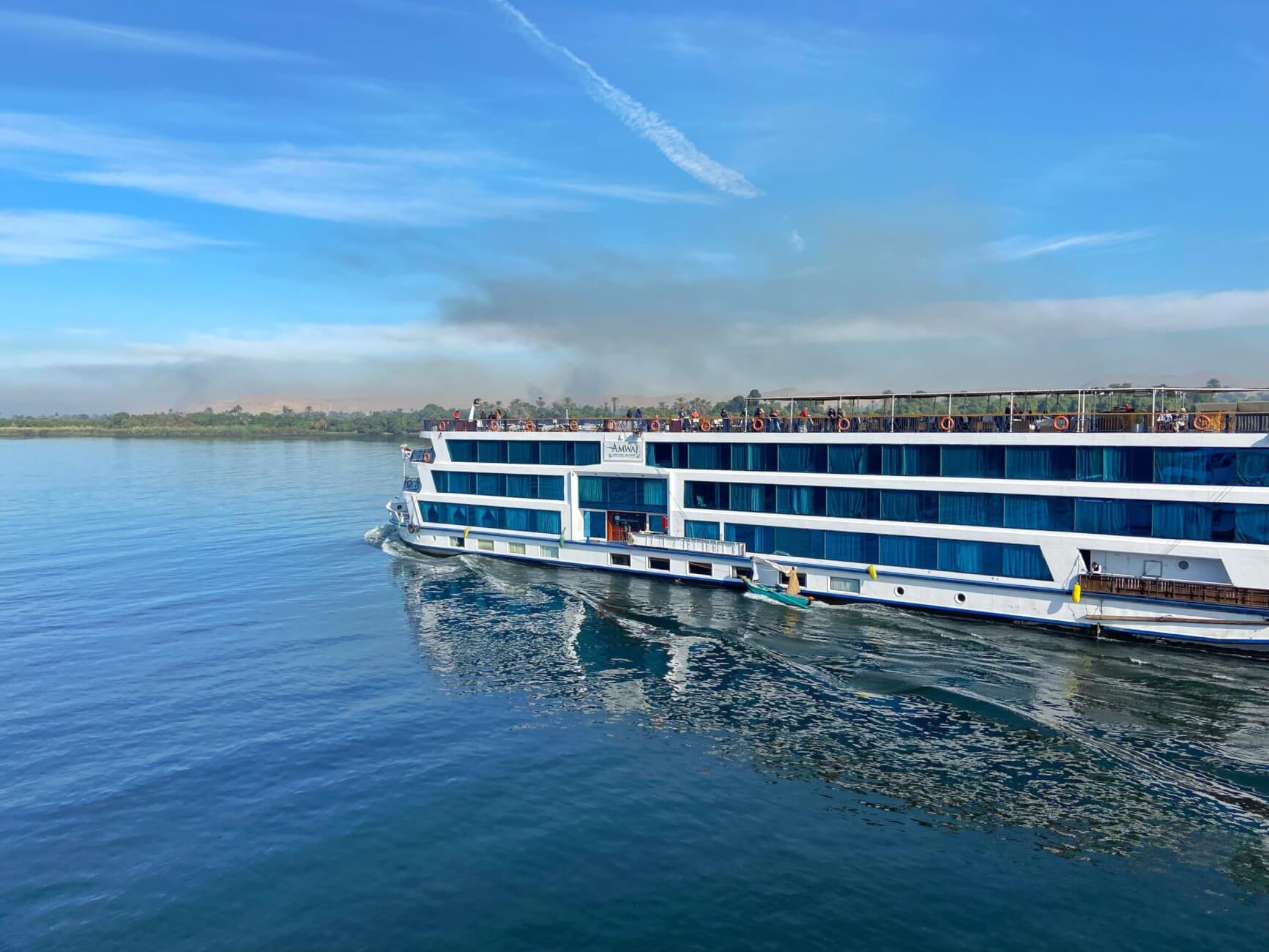
Cruising the Nile
On Day 1 of the cruise, the ship stays docked in Aswan, and you’re picked up from your hotel / airport / train station by the tourism company’s staff. Starting from lunch at around 1 pm, you’re then picked up around 3 pm for a tour to Aswan High Dam, followed by a motorboat ride to Temple of Philae, which is on an island. We managed to catch the sunset on our way back from the temple, which was breathtaking. The tour guide goes along with you to these destinations, explaining the history and the importance of these monuments to Egypt’s culture & economy. You then return to your cruise boat for dinner and some cultural events & entertainment such as belly dancing, tanoura dancing, etc. At night, you can sip on some drinks and relax on the sun deck while enjoying the cool breeze. The boat stays docked in Aswan overnight.
Day 5: Abu Simbel + Cruising to Kom Ombo
If you have chosen the small group tour to Abu Simbel, prepare to be woken up at 4 am! You will be packed picnic breakfast and then you will head on a 4-hour journey to Abu Simbel. While this tour is extremely tiring, due to the time spent in transit, I highly recommend it because it is one of the most awe-inspiring temples in Egypt. Almost near the border to Sudan, these impressive rock-cut temples were built in 13th century BCE and are one of the most magnificent and well-preserved examples of ancient Egyptian architecture.
There are two temples in the complex – one is the main temple, dedicated to the gods Ra-Horakhty, Amun, and Ptah, as well as to the deified Ramses II himself. The most stunning part of the temple is the façade that features four colossal ‘seated’ statues of Ramses II, each standing at about 20 meters (65 feet) tall. Next to the Great Temple, there is a smaller temple at Abu Simbel dedicated to Queen Nefertari, the principal wife of Ramses II. The facade of this temple also features impressive statues, with the queen depicted alongside Ramses II. The interior of the temple showcases beautiful wall reliefs and paintings depicting scenes of Nefertari and the gods.
We reached around 8.30 am which was perfect because the area wasn’t too crowded yet. We had about 2 hours to explore the temple complex after which we took the 4-hour journey back to Aswan, where our cruise was docked.
You will arrive back just in time for lunch, post which the cruise (finally) sets sail! You have about 2-3 hours to relax on the sun deck, take a dip in the pool, sip on some local Egyptian wine or beer, or simply take a nap! At around 5 in the evening, you will arrive at Kom Ombo temple.
An ancient temple complex located in Upper Egypt along the east bank of the Nile River, the site is dedicated to two different sets of deities and was constructed between the 2nd century BCE and the 1st century CE. The primary deities worshipped at Kom Ombo are Sobek, the crocodile-headed god associated with fertility and protection, and Horus, the falcon-headed god associated with kingship and the sky. The walls of the Kom Ombo temple are adorned with intricate reliefs and carvings that depict various mythological and historical scenes. These reliefs provide valuable insights into ancient Egyptian religious beliefs, medical practices, and daily life. Our tour guide taught us how to read the numbers in the ancient Egyptian language, and it was so exciting!
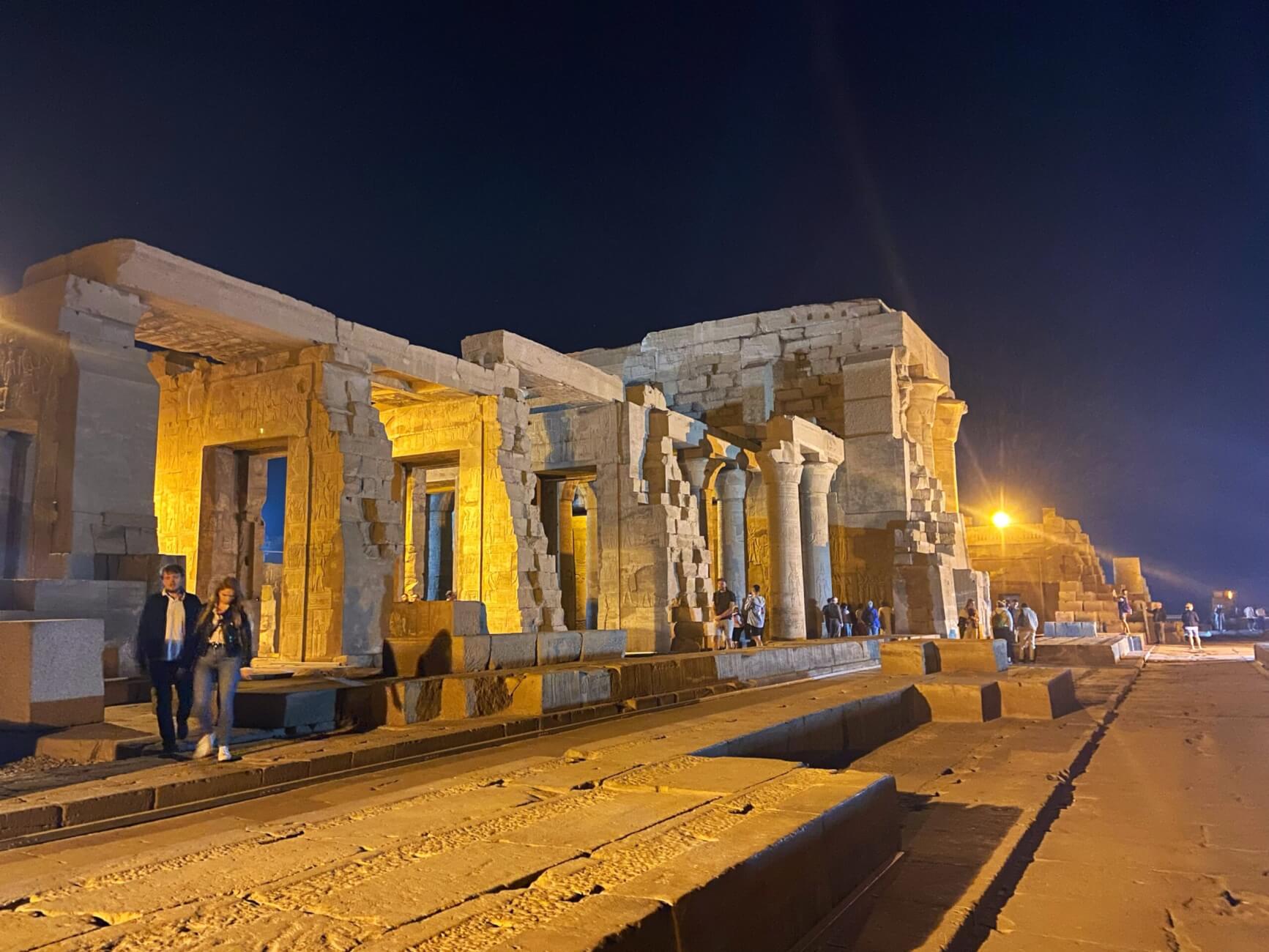
The temple is on the shore of the Nile itself, so you just need to walk about 5 minutes to it. At the end of the tour, we returned to the cruise for dinner and relaxation time.
Day 6: Edfu, Luxor Temple, Karnak Temple
Day 3 of the Nile Cruise will take you at around 8 am (after breakfast) to The Temple of Edfu. You can choose to either go in an airconditioned car / minivan or a horse carriage. The roads are quite bumpy so be prepared for an uncomfortable, rough ride if you choose the horse carriage. The temple is about 15-20 min away from the area where the cruise is docked.
The Temple of Edfu, also known as the Temple of Horus, was dedicated to the falcon-headed god Horus, who was considered a symbol of kingship and protection, and was constructed between 3rd century BCE and 57 BCE. Known to be one of the largest temples in Egypt, the temple is a magnificent piece of architecture. The impressive gateway, towering columns, and the intricate reliefs and inscriptions depicting mythological scenes, religious rituals, and historical events on the temple walls are absolutely spectacular!
At around 11.30 am, we returned to our cruise. Here, we had about 2 hours to rest before lunch time. On this day, the cruise also crosses what is known as the Esna Lock. This is something I recommend you to be present on the sundeck to observe as it is quite an intriguing experience. Esna Lock is a navigational lock and barrage system that regulates the water levels of the Nile and allow ships to navigate through the varying water depths. You will watch as your cruise will enter the lock, slowly the water levels will be adjusted and you will start to feel your cruise height changing, and then it will be released from the lock to continue its onward journey! This process can sometimes take time, as there could be several other ships queued on the lock, as the lock can handle only one ship at a time. Based on the queue and the time taken in the process of water level adjustment, your tour company will decide whether you’re able to visit both Luxor & Karnak temples on the same day or keep one of them for the next day.
In the evening, your cruise will arrive at it’s final docking destination – Luxor. Here, a minibus will take you first to Karnak Temple, yet another massive temple complex with towering columns that are bound to make you feel tiny and insignificant. In the center of the temple complex lies the famous Hypostyle Hall, with 134 colossal columns, some reaching heights of over 21 meters (69 feet). The columns are adorned with intricate hieroglyphs and reliefs, depicting religious scenes and historical events.
Also located on the east bank of Nile is Luxor Temple. It is one of the most significant and well-preserved temples in the country, offering insights into the religious and architectural achievements of ancient Egypt. The entrance to the temple is, once again, the most stunning part with an imposing gateway, flanked by colossal statues of Ramses II. As you walk ahead, you will arrive at the courtyard surrounded by colonnades with massive columns. You will now begin to see several similarities in the architecture of these Egyptian temples and the intricate wall carvings. You will spend about 1.5 hours in this temple with your tour guide who will explain the history and significance of this popular tourist site.
Day 7: Luxor West Bank
If you have chosen to experience the Hot Air Balloon ride over Luxor, you will be woken up at 4 am once again! This is because during your hot air balloon ride, you’re meant to catch the beautiful sunrise. The experience is absolutely magical, and even though I am not a fan of waking up so early in the morning (for God’s sake, we are on vacation!), it was truly worth the inconvenience.
After the hot air balloon ride, you will return to the cruise to have the last meal (breakfast) before you check out around 8 – 9 am. However, your tour isn’t over yet! You will then visit the Valley of the Kings where more than 60 Egyptian Pharaohs have their resting place carved out of the mountain cliffs. The Valley of the Kings served as a necropolis, or a burial ground, for pharaohs, queens, and other high-ranking officials due to its secluded location, which was believed to provide protection and security for the tombs. You can enter one (or more) of these tombs to observe the elaborate and intricate designs. The walls of the tombs are adorned with colorful paintings, hieroglyphs, and religious scenes that depict the pharaoh's journey to the afterlife and their interactions with various gods and goddesses. These paintings provide valuable insights into ancient Egyptian mythology, religious beliefs, and funerary rituals. An intriguing tomb here is that of Tutankhamun, which was known for its remarkable state of preservation and the rich treasures it contained, when it was first discovered in 1922.
From here, you will head to Temple of Hatshepsut, a mortuary temple dedicated to the female pharaoh Hatshepsut. The most impressive part of the temple is its dramatic setting at the base of towering cliffs. The three-levelled temple contains impressive statues and reliefs depicting scenes from Hatshepsut's life and achievements. The top level offers stunning views of the surrounding landscape. It was a particularly hot day when we arrived here, so be prepared that this area is usually warmer than other parts of Egypt.
Lastly, you will visit The Colossi of Memnon, two massive stone statues that stand in front of what was once the entrance to the mortuary temple of Amenhotep III, a pharaoh from the 18th Dynasty. The statues measure about 18 meters (60 feet) in height and were originally part of a larger complex that included other structures and statues, but most of them have been destroyed or damaged over time.
With this, your Nile Cruise will come to an end, and you will be dropped to your hotel / train station or airport, as you may choose. We decided to take it easy (no doubt, the 4 days were packed with a lot of visits to historical monuments and sites, which made it exciting and informative but also tiring) and stayed overnight in Luxor. We spend the evening shopping in the winding, narrow, chaotic streets, ending with a sumptuous dinner at the terrace of our hotel, overlooking Luxor temple.
Suggested budget hotel to stay, with excellent views of Luxor Temple: Nefertiti Hotel Luxor.
Day 8: Hurghada
If you do not have the time, this is when you can return to Cairo from Luxor by train or flight. We decided to extend our trip to spend some relaxing time at an all-inclusive resort on the Red Sea in Hurghada. I researched a lot between Hurghada & Sharm el Sheikh, both of which are extremely popular resort towns for tourists. However, I chose Hurghada because of several reasons: availability of lesser expensive all-inclusive resorts, more options for island hopping / day trips and proximity to Luxor. We rented a minivan for the 6 of us through a website called Bookaway which we found very convenient, comfortable & reasonably priced. We paid 150$ for the entire vehicle, and the journey took about 4 hours by road.
We booked an all-inclusive beachside five-star resort in Hurghada, called Arabia Azur Resort, which was excellent and truly gave us the best value for our money!
Day 9: Daytrip to Paradise Island
You can choose to spend as much time as you have relaxing in the beachside resort in Hurghada but for someone like me, who always likes to be on her toes, I wanted to explore the Red Sea and go diving / snorkelling. I booked us a speedboat tour through Getyourguide to Giftun Island which included lunch and snorkelling. The tour operators gave us the choice between Orange Bay and Paradise Beach and after reading several reviews, I felt that Paradise Beach seemed lesser crowded and more picturesque, so we chose to go there. A 20-minute boat ride go us to this beautiful island which had several instagrammable spots with the swings in the middle of the ocean, swings on the edge of the sea, cute shacks and vendors distributing ice cream on a hot day, recliners and umbrellas lining the long white sand beach, and several relaxation areas and spots. We relaxed here and grabbed a few drinks, swam in the cold waters of the ocean, and then headed for lunch after about 2-3 hours. Lunch was arranged as part of the tour, and it was reasonably good. After lunch, we spent another hour sunbathing on the beach and enjoying the music, before we headed into the ocean for snorkelling in the motorboat.
The Red Sea is known for its colorful, stunning underwater sealife, so if you’re a diver, it’s bound to be an unmissable experience for you. Even if you’re not, the least you can do is snorkel. The tour company had arranged all the required snorkelling gear for us including masks, fins, lifejackets, etc. Hurghada’s waters are known for its coral reefs, unique marine species, and of historic shipwrecks.
The tour lasted about 6 – 7 hours and we returned to our resort in Hurghada.
Day 10: Return to Cairo
While you can take a taxi back to Cairo from Hurghada (it’s about a 5-hour journey), we were a bit short on time and decided to take the flight instead. If you do that, make sure to keep enough buffer between your arrival time in Cairo and your onwards flight to your home country/ next destination.
Click here to read about Everything you need to know before visiting Egypt.

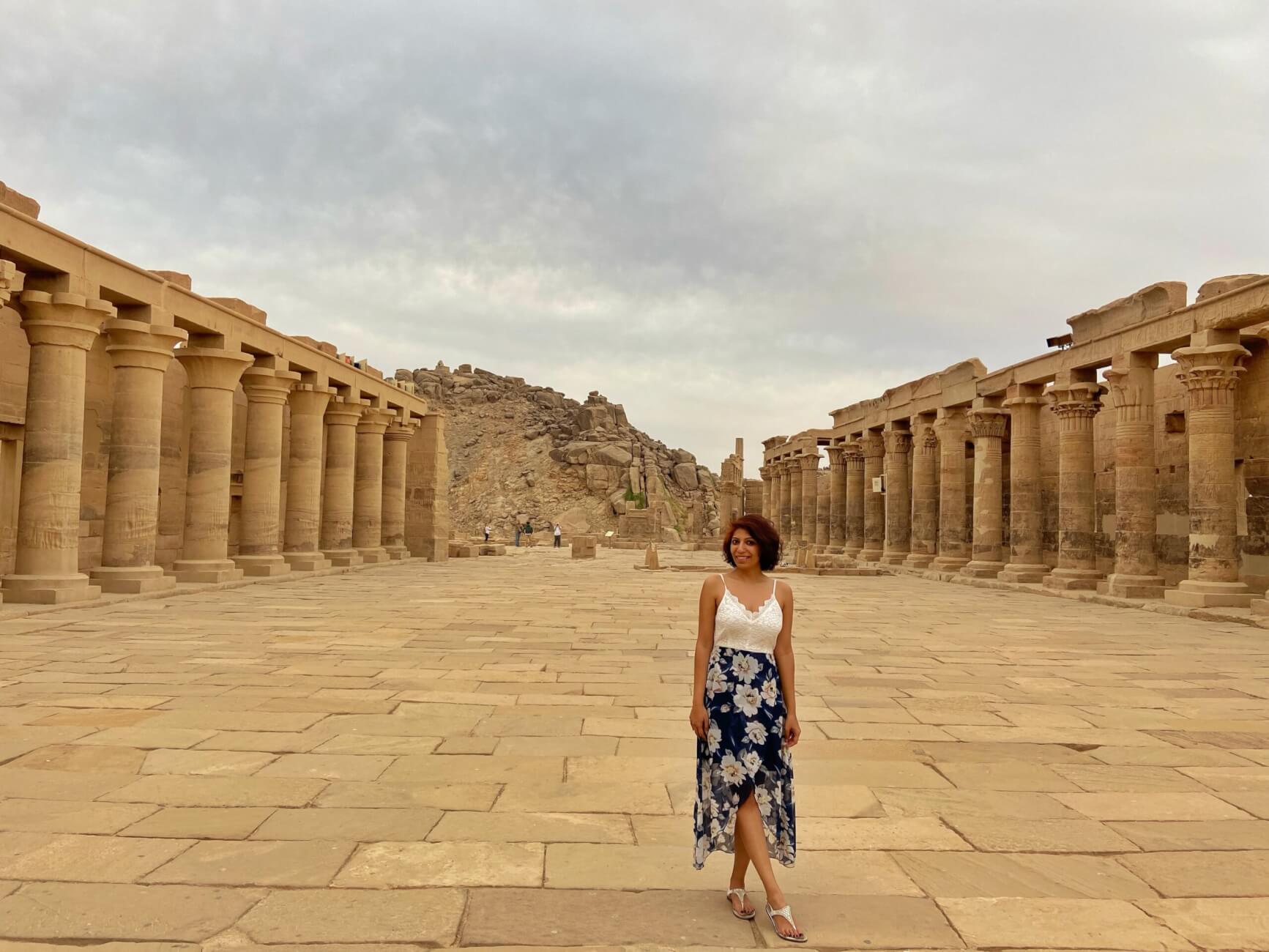

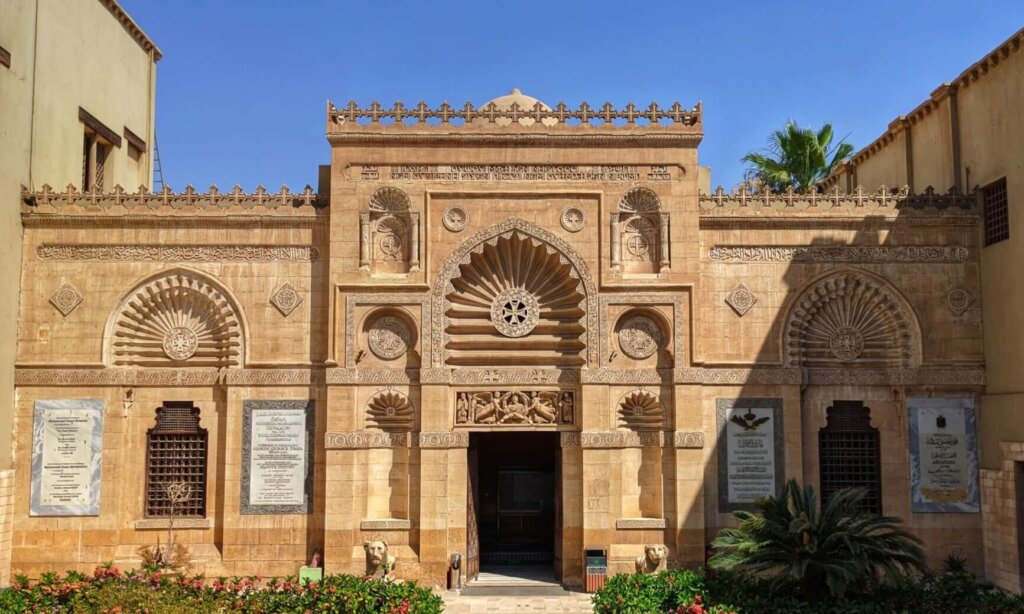
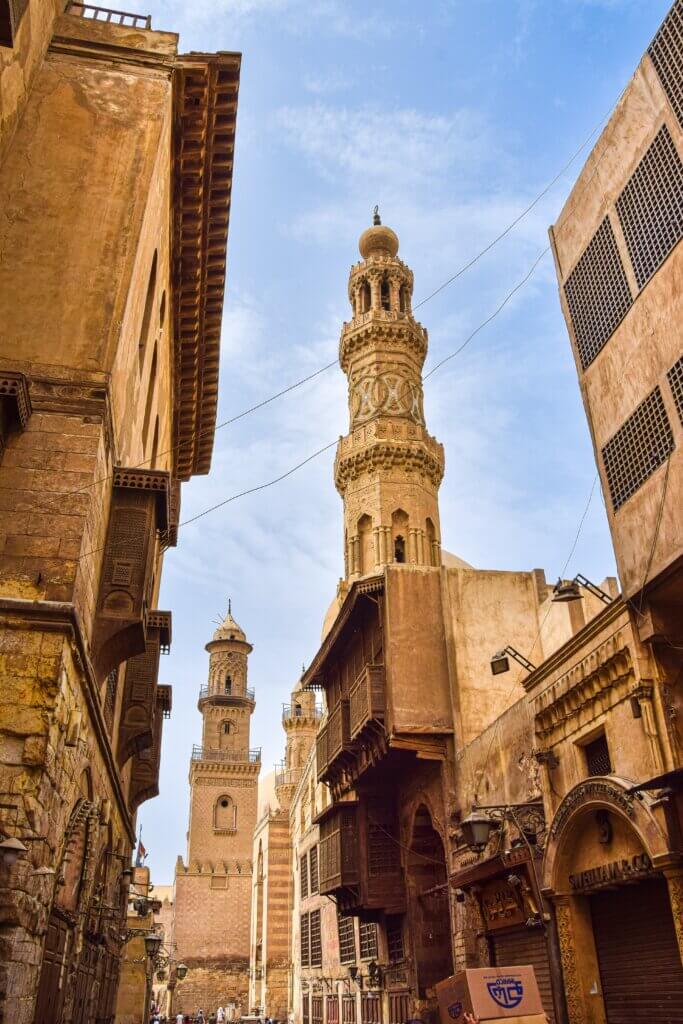
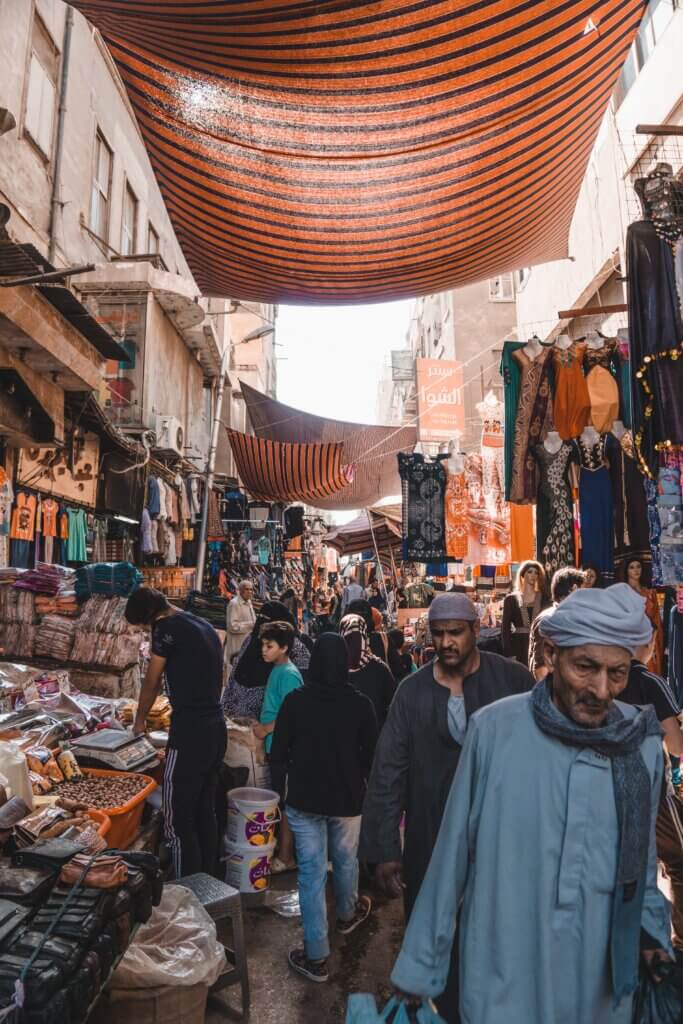
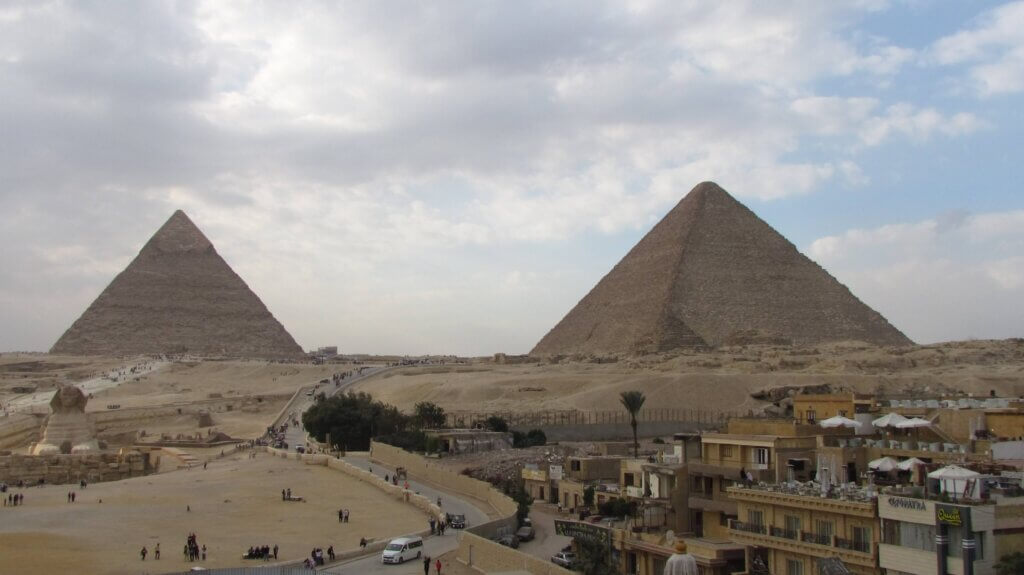
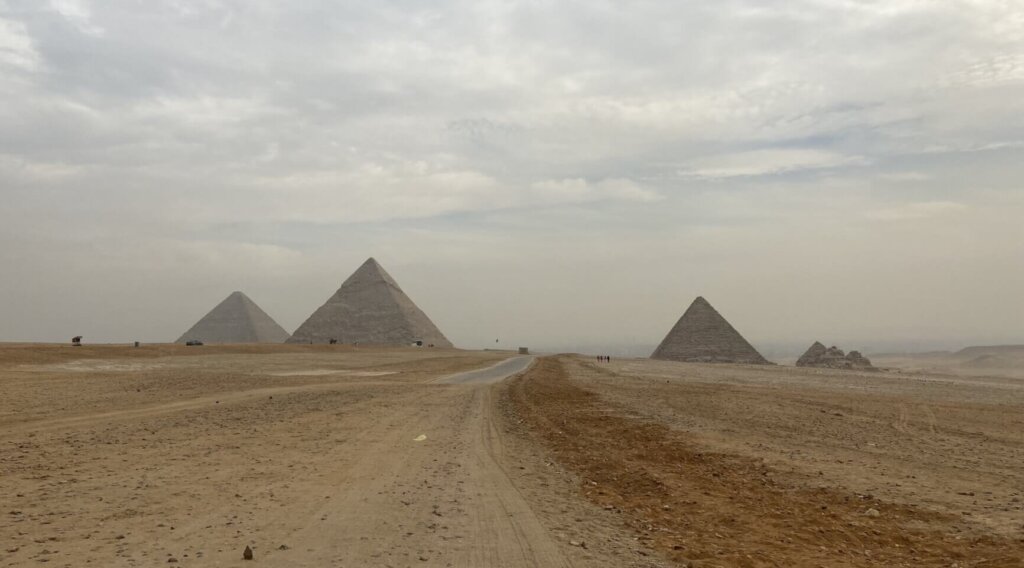
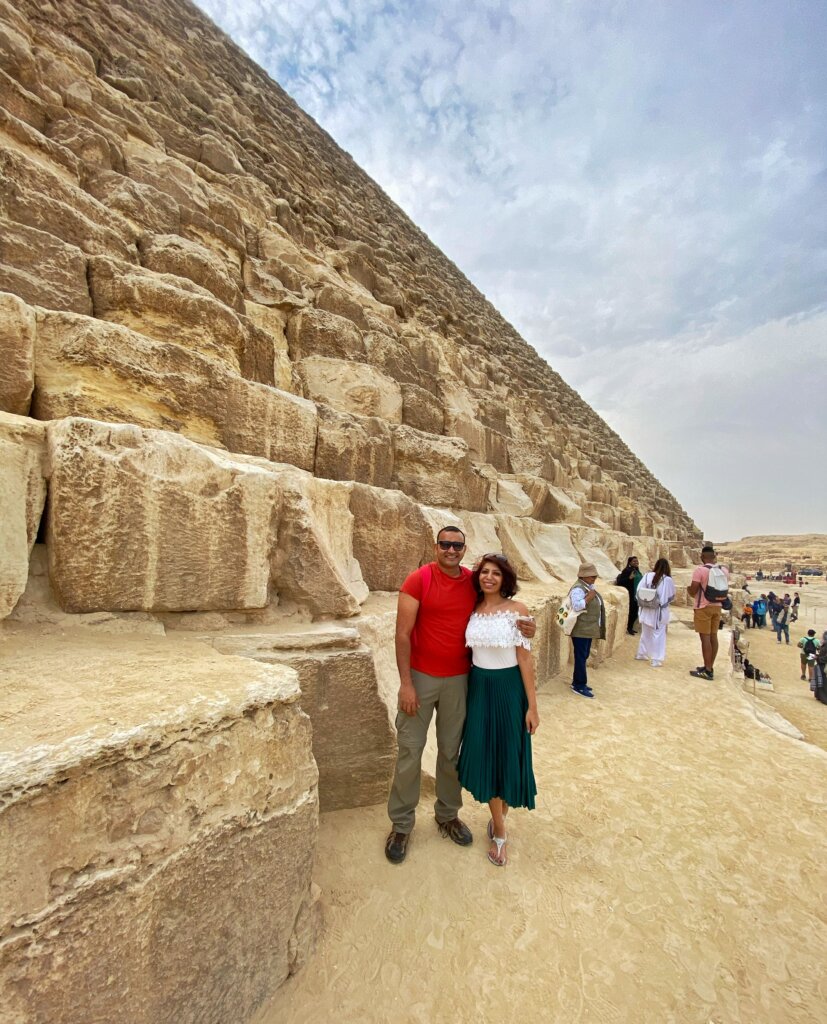
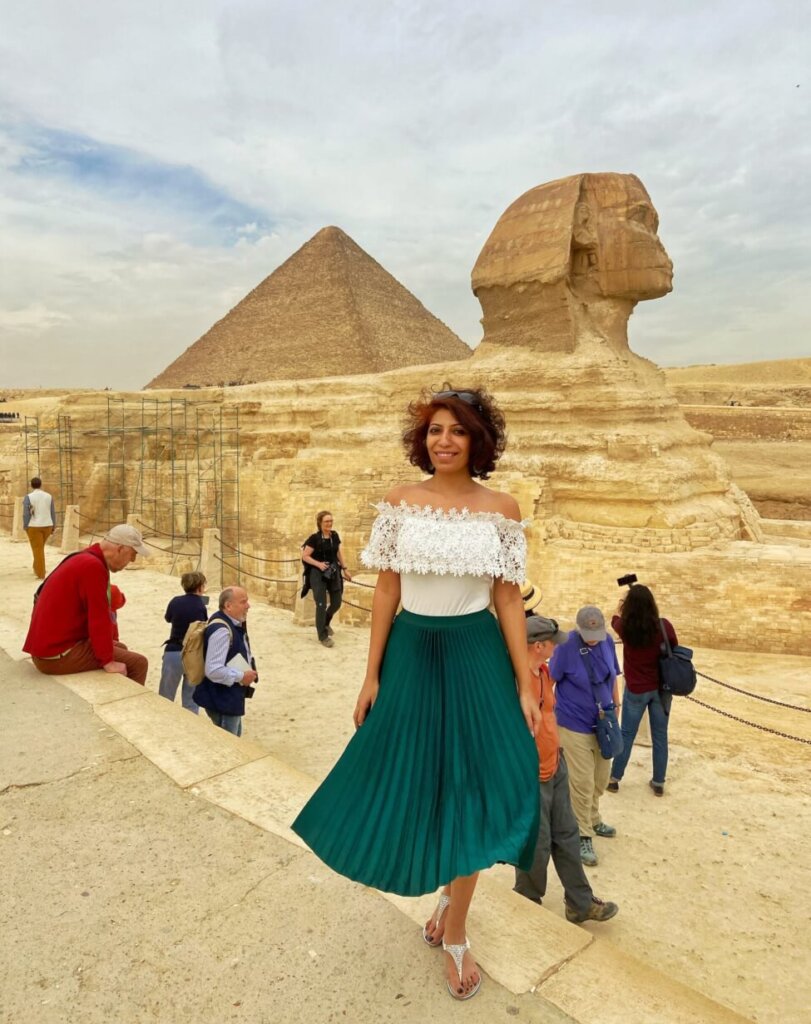




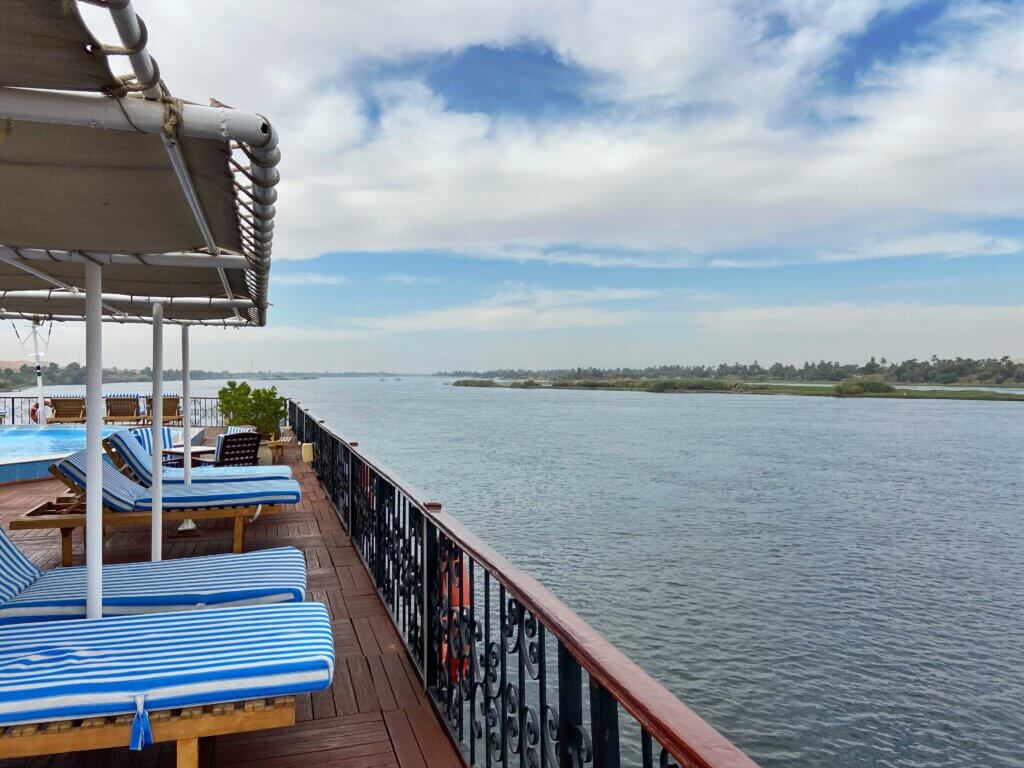
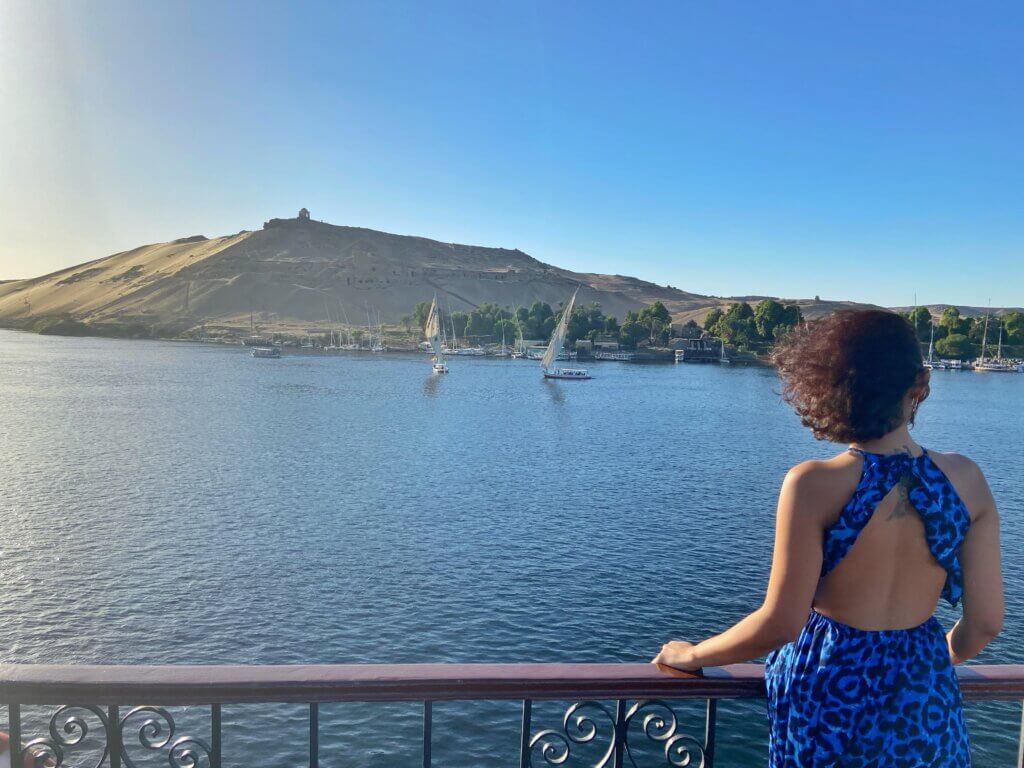


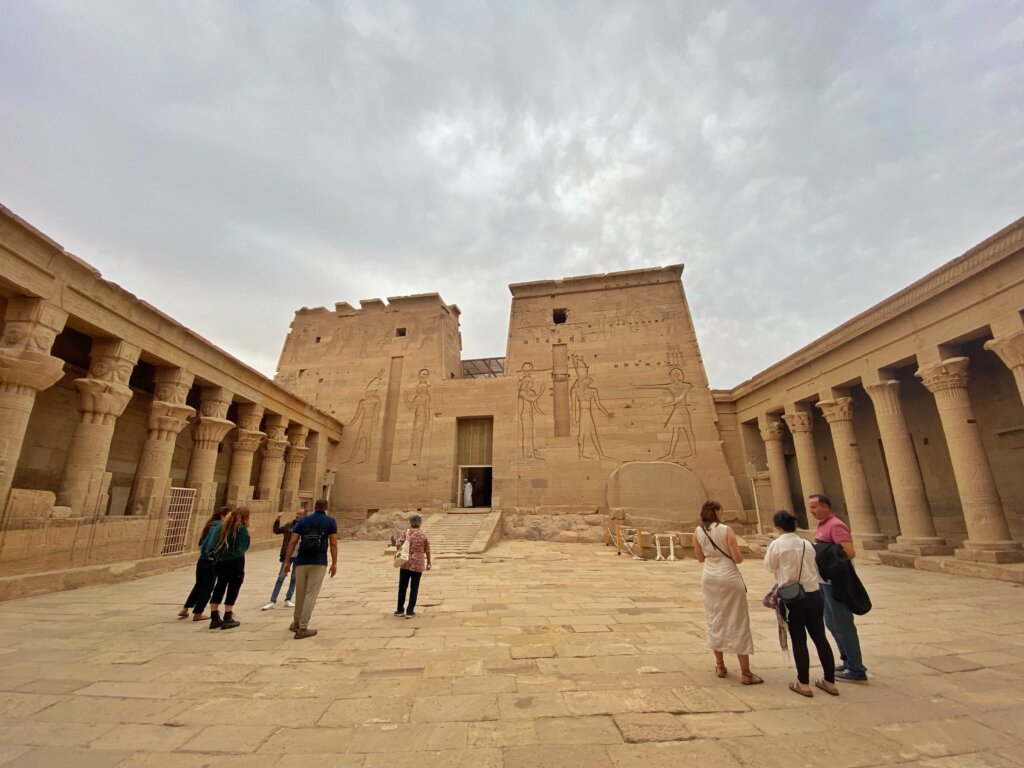
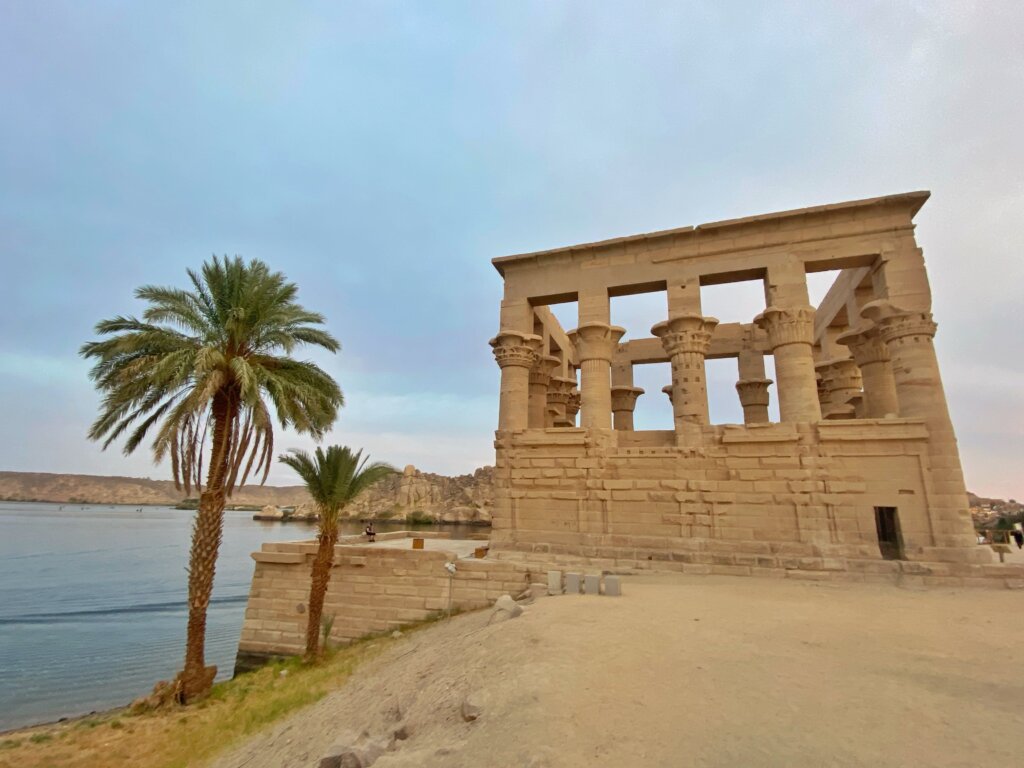
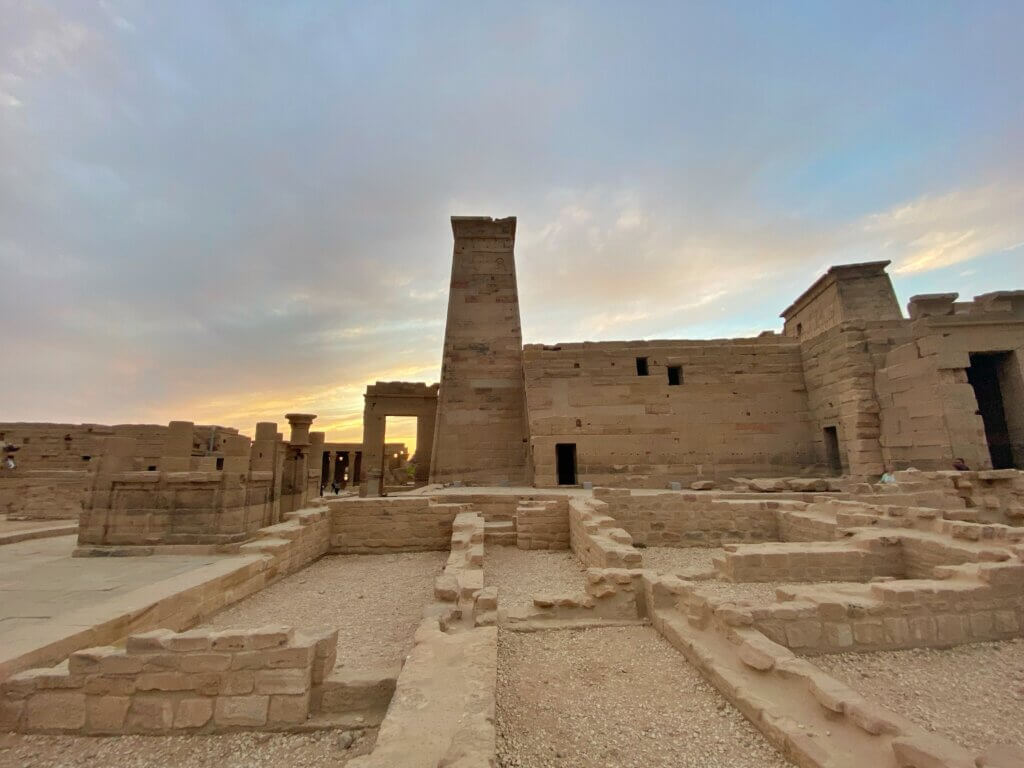
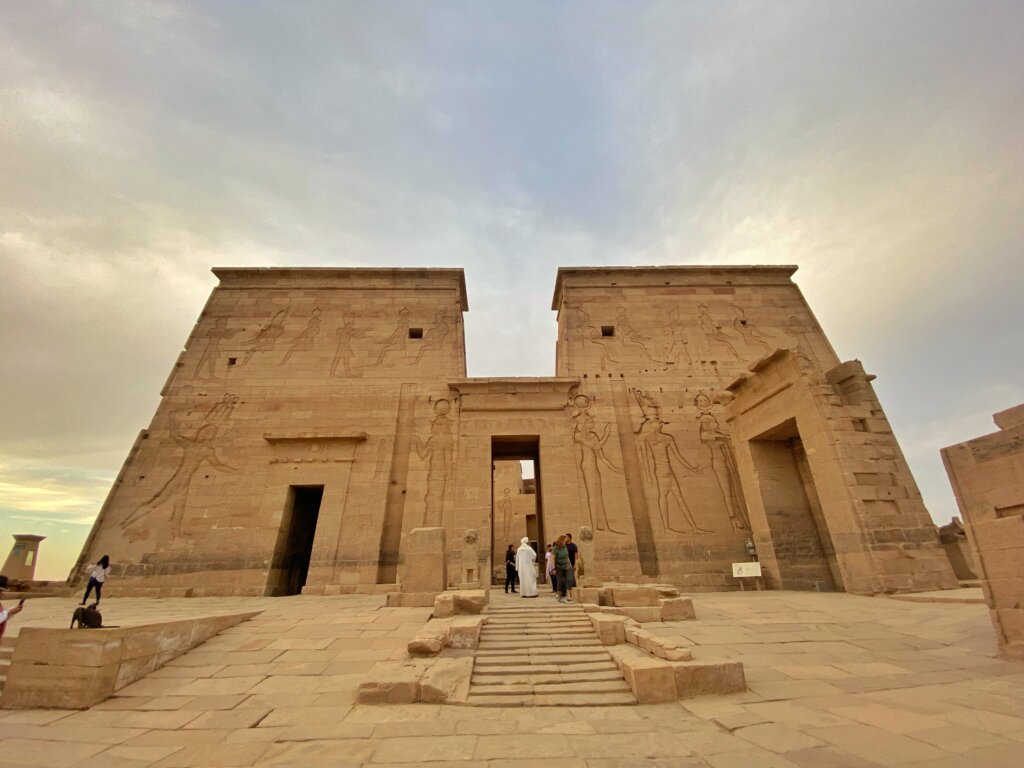
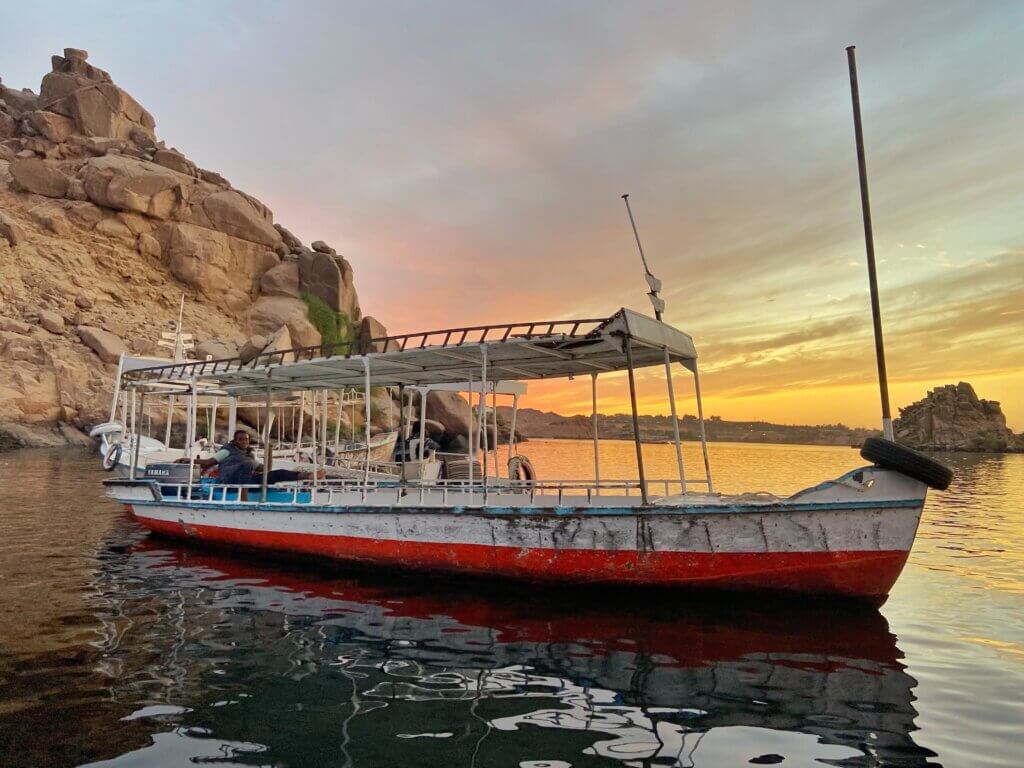
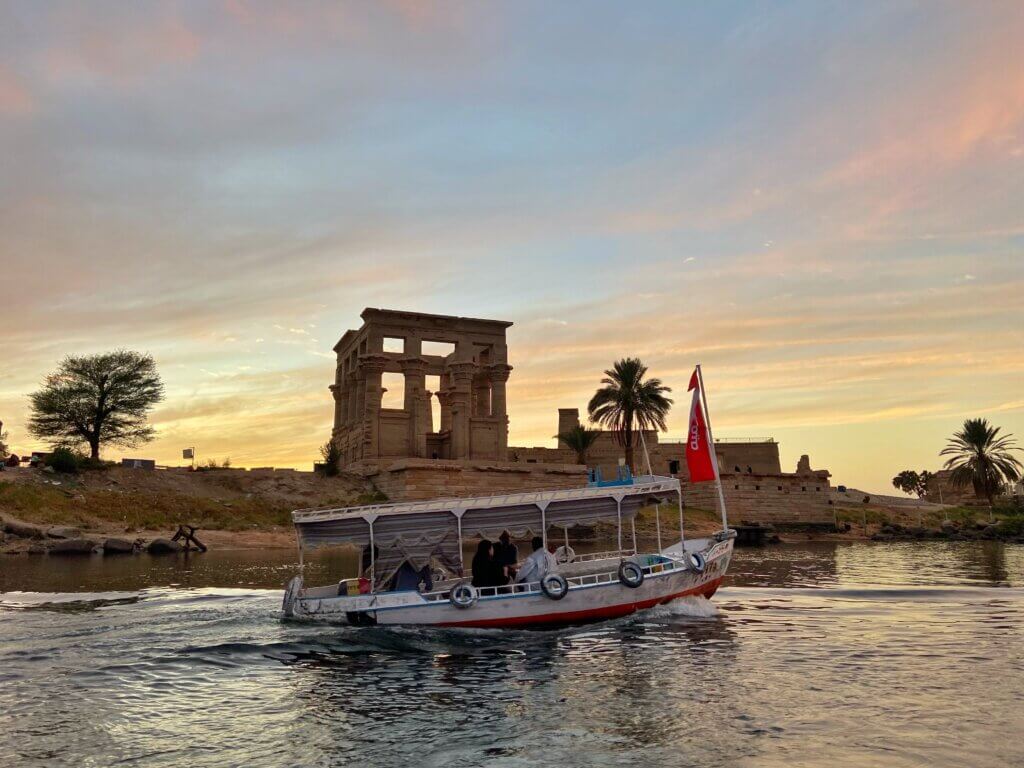
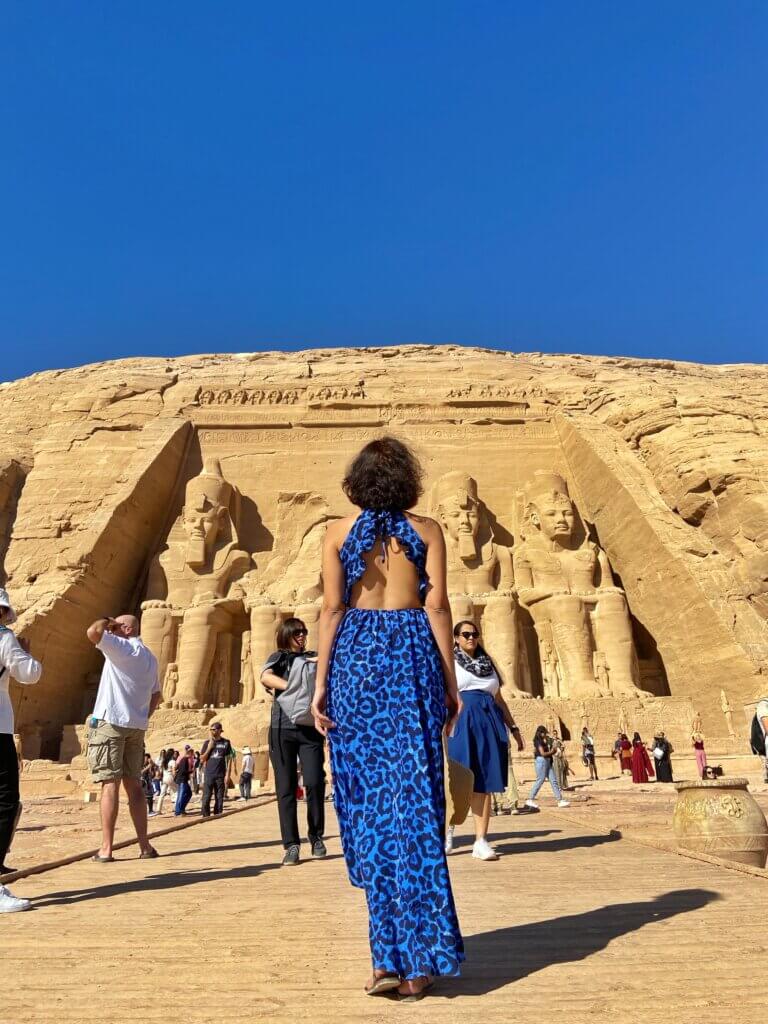
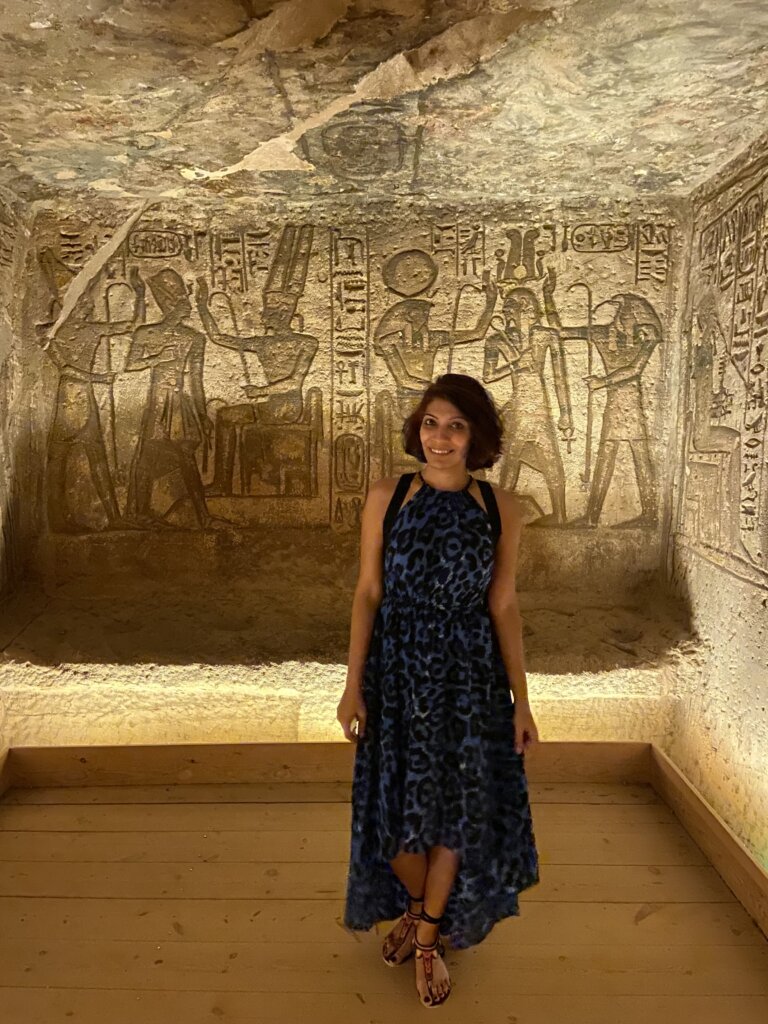

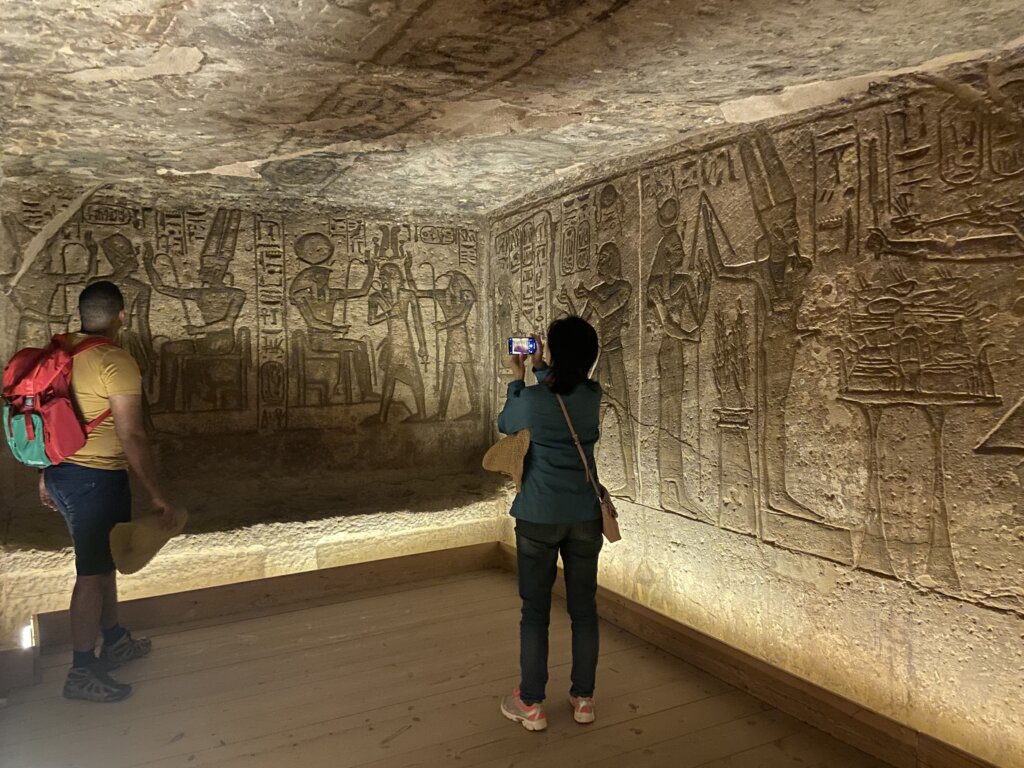
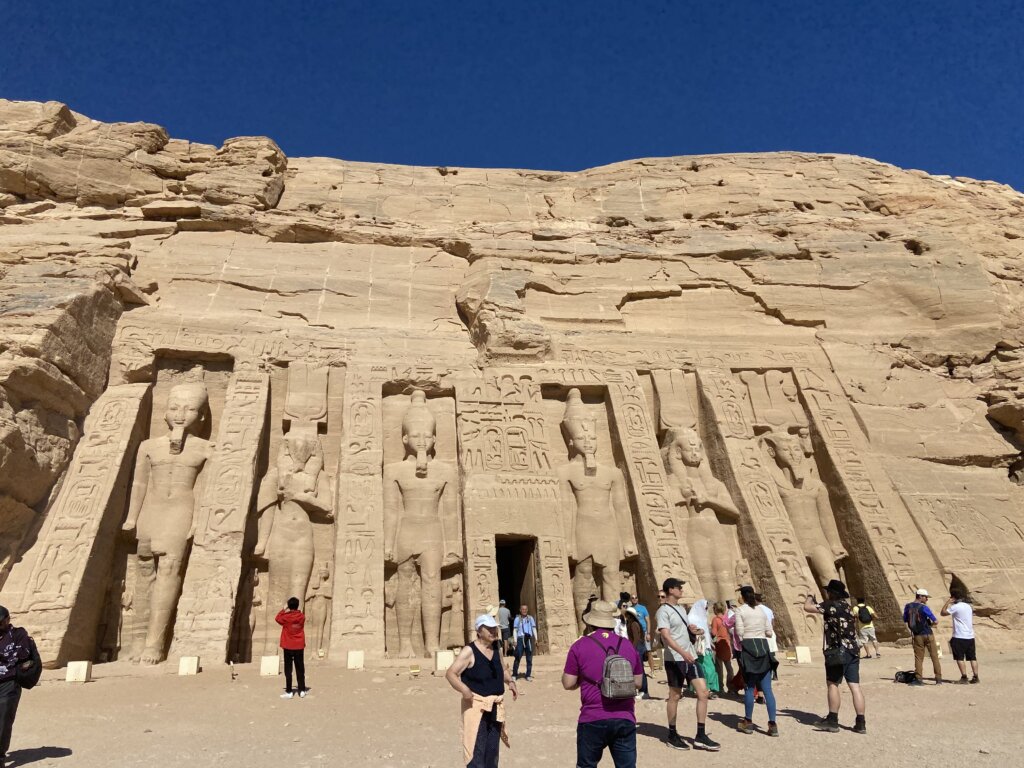
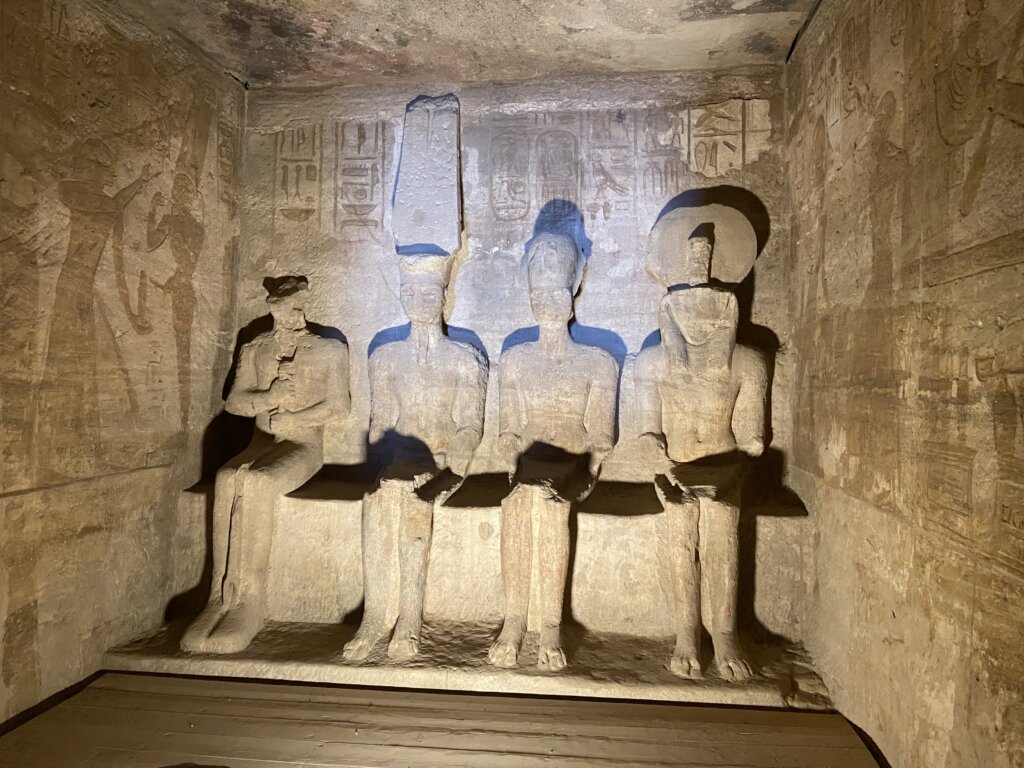
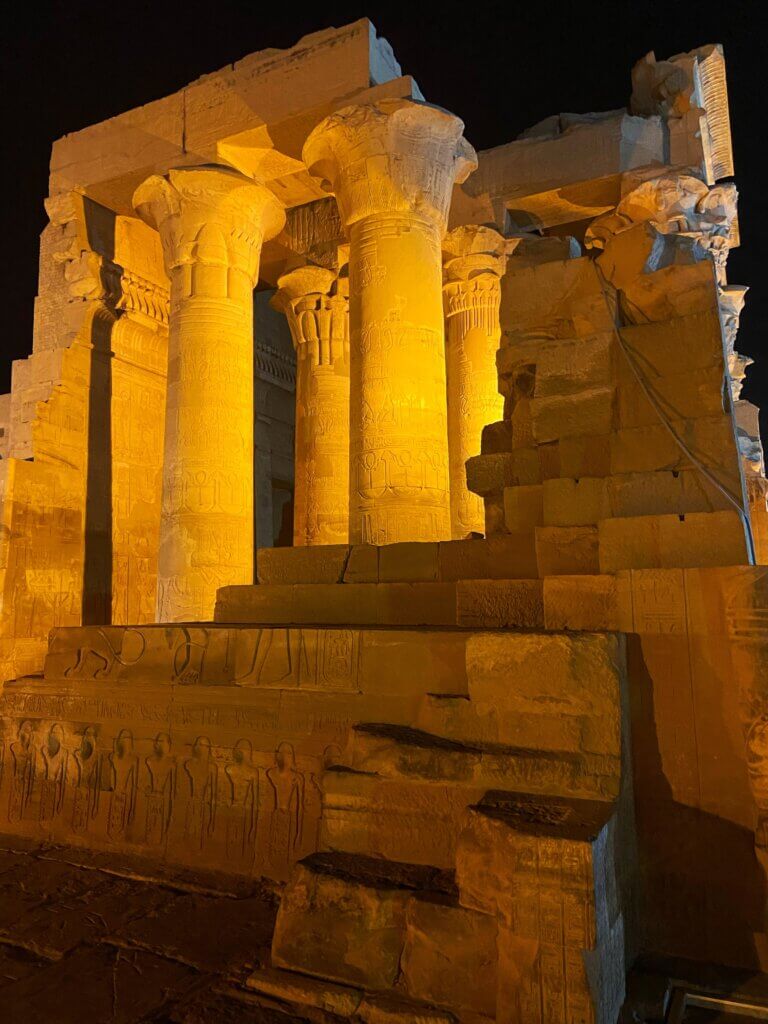

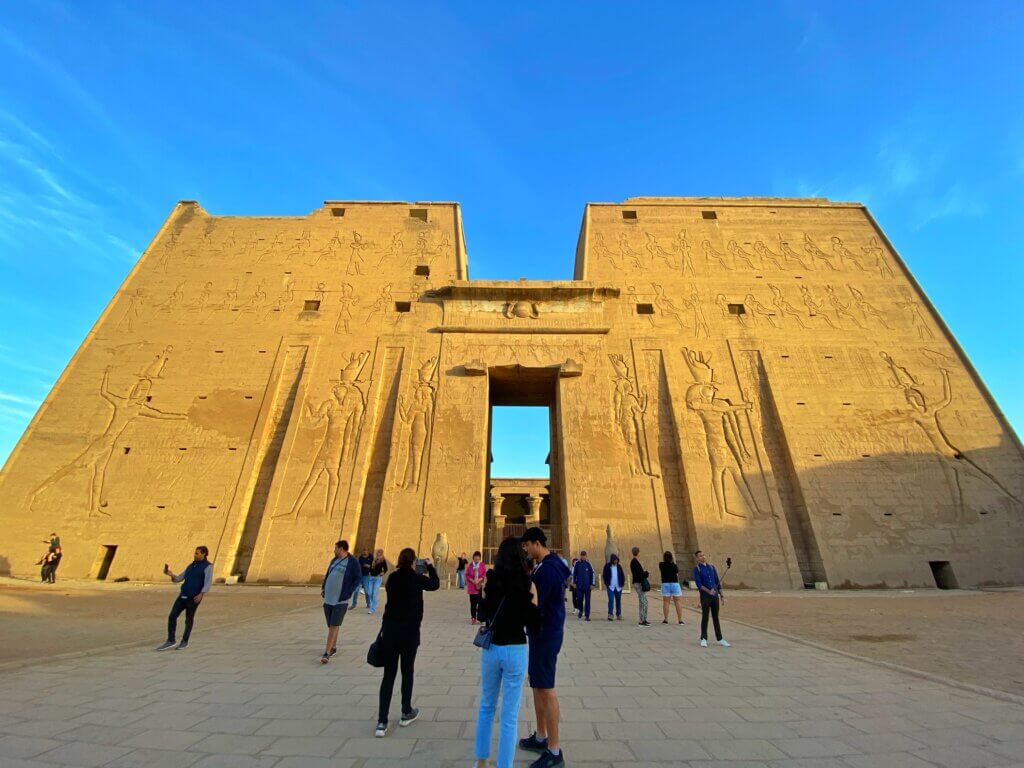
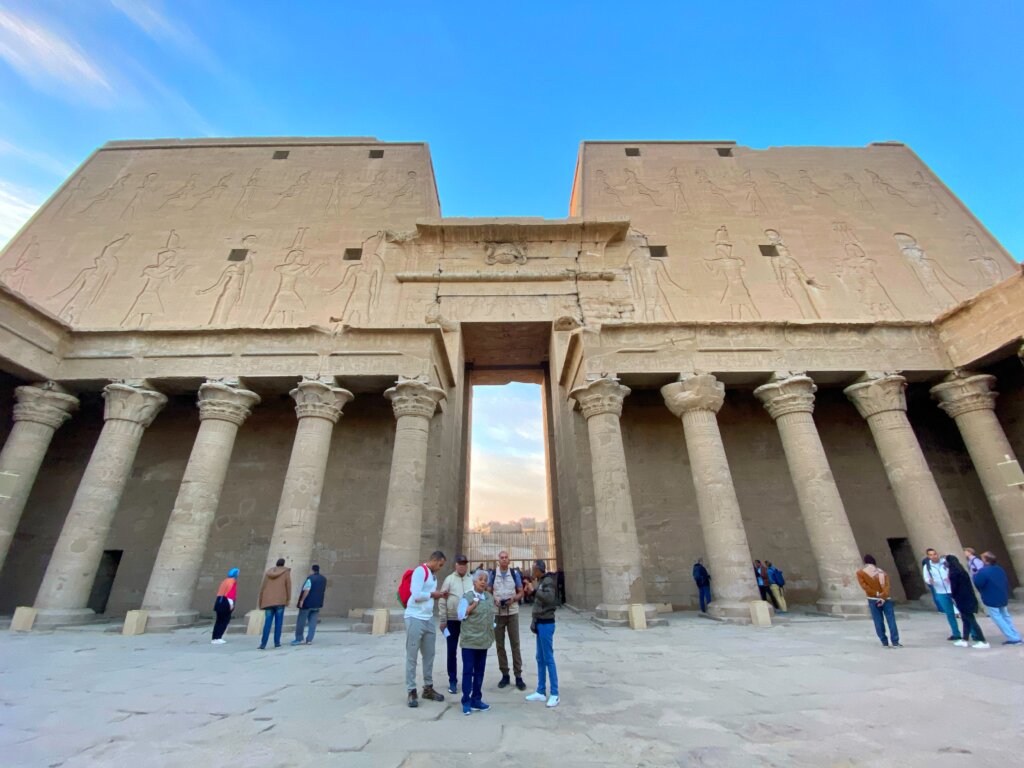
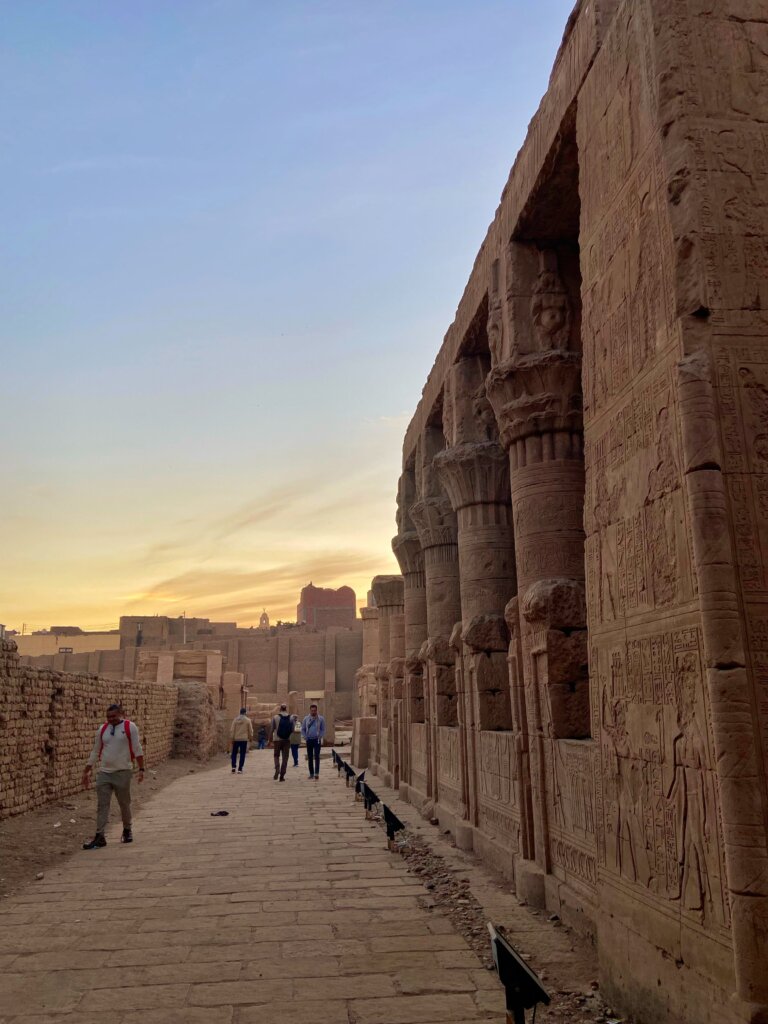
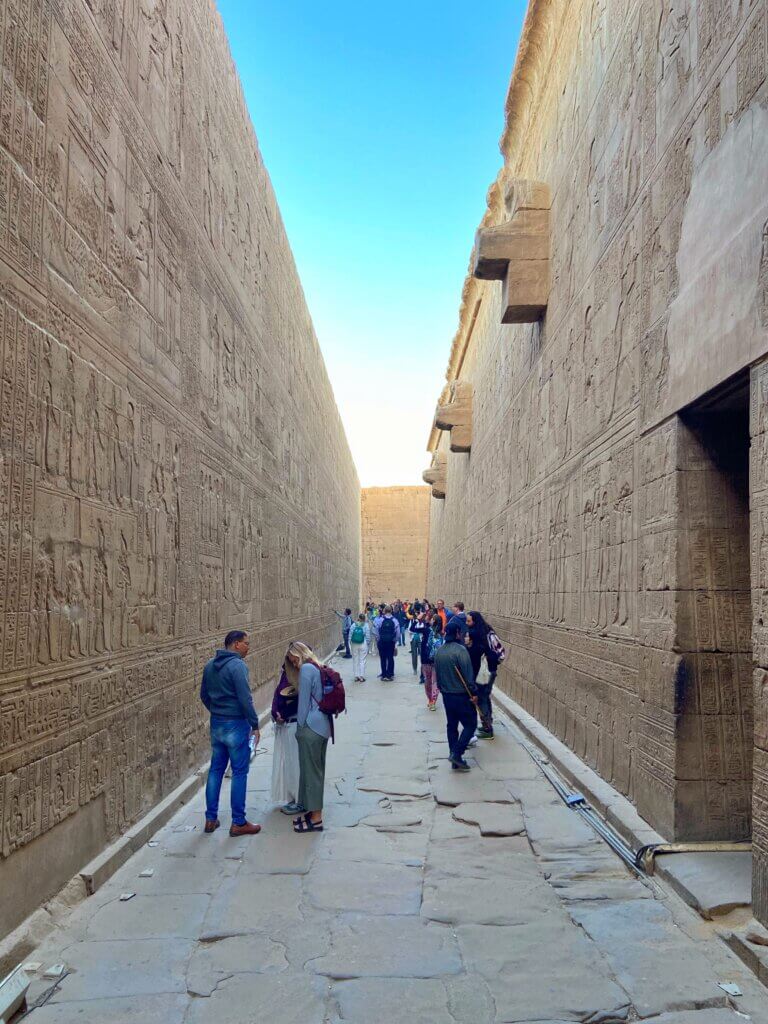
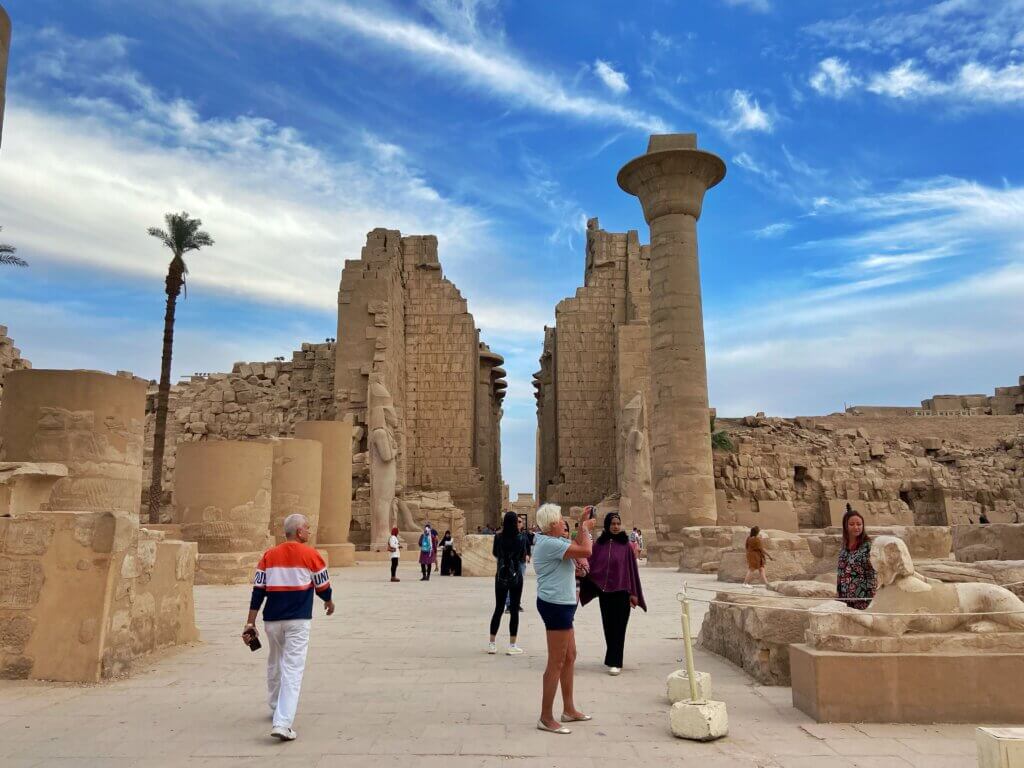

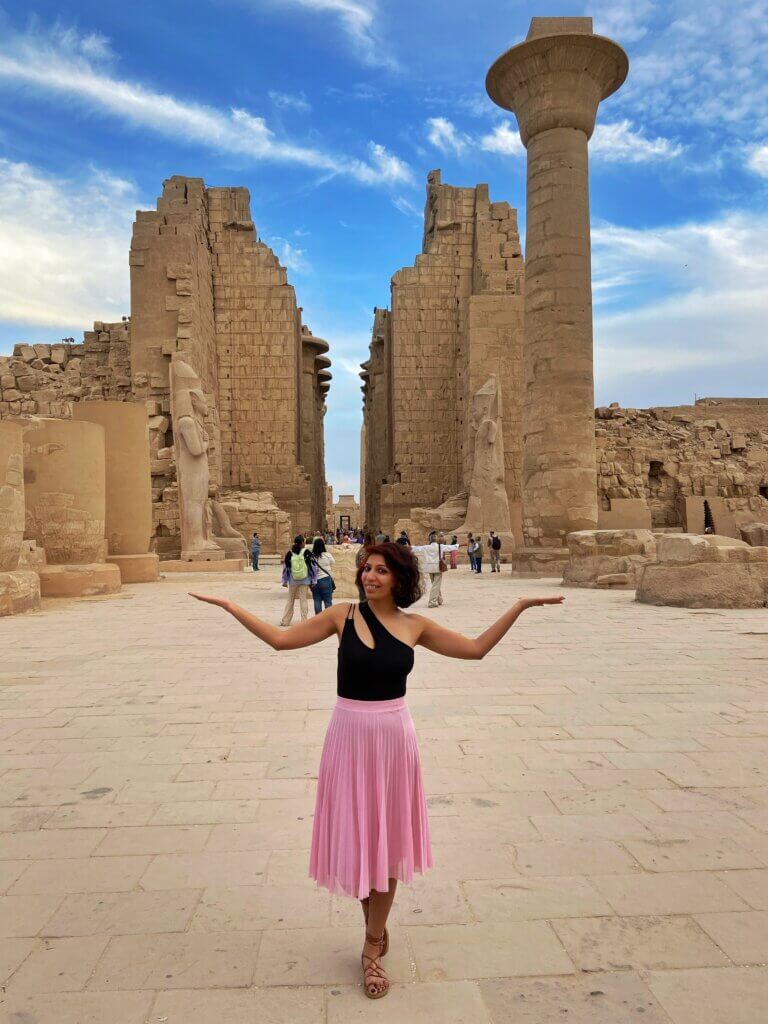
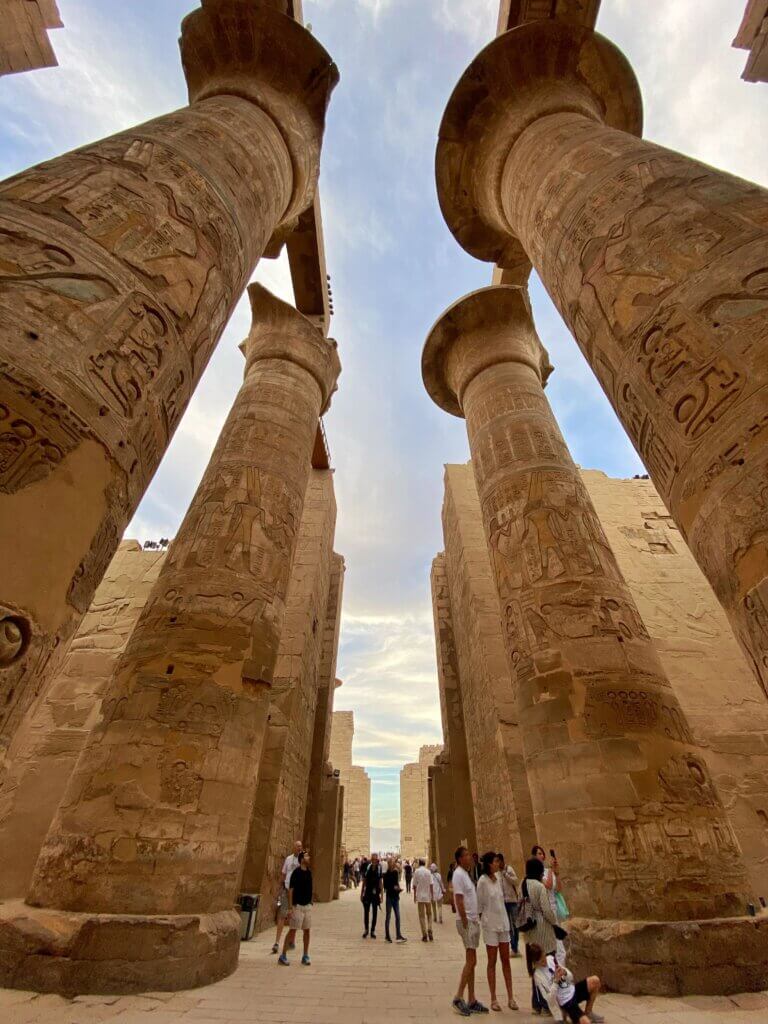

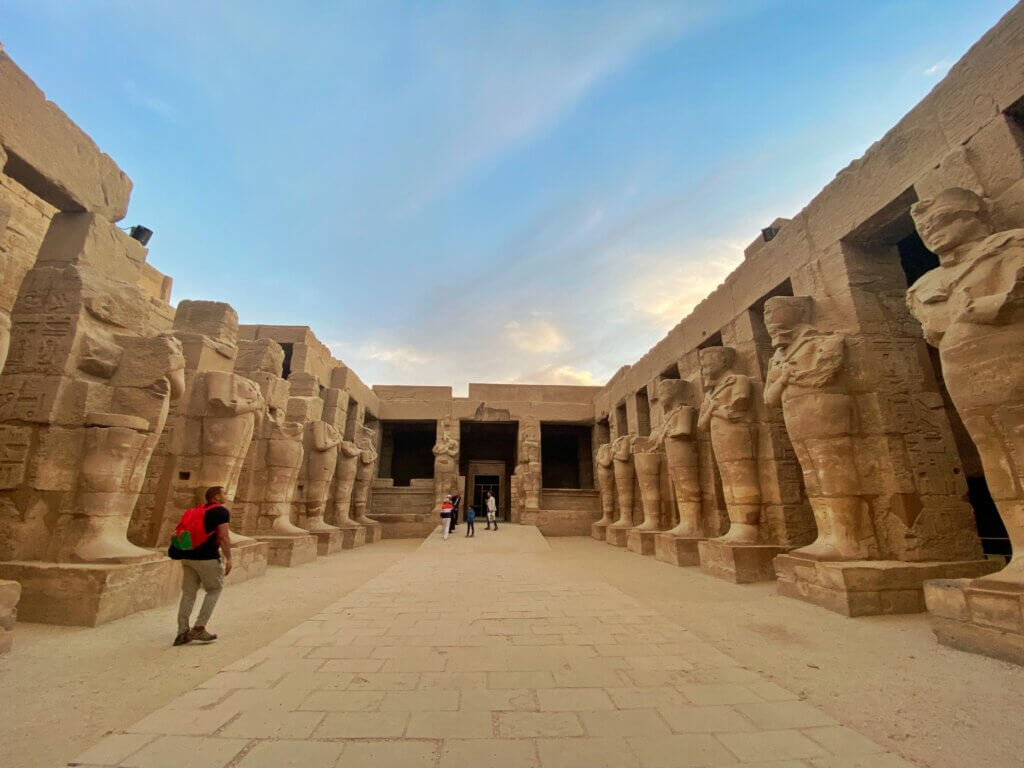
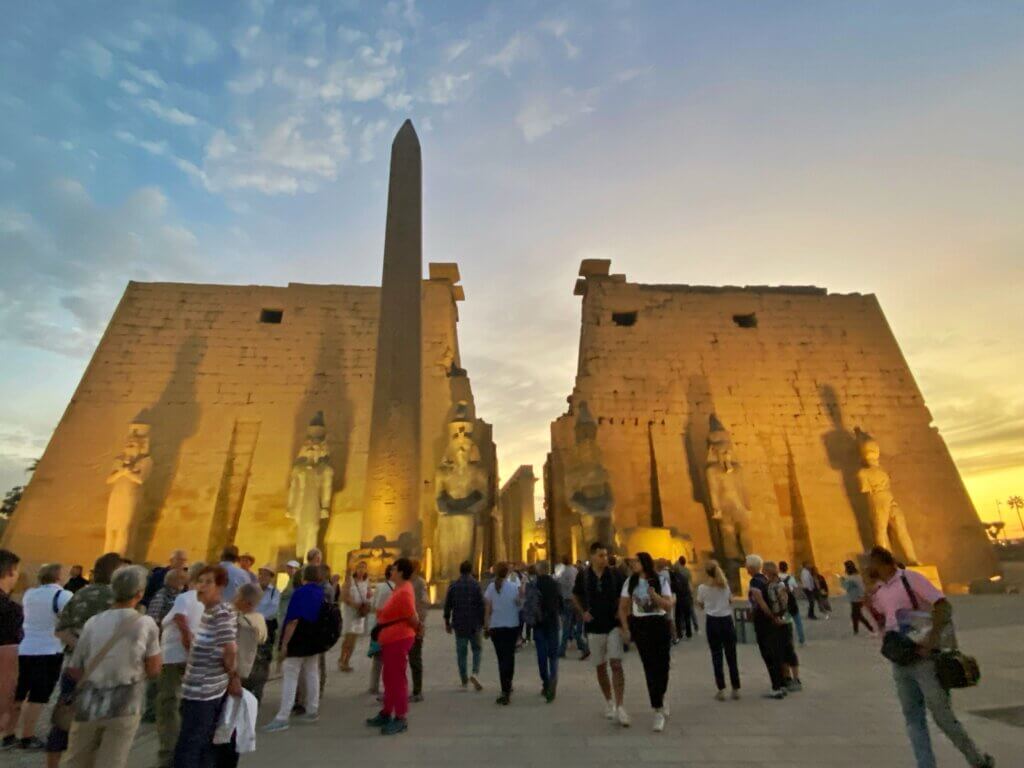
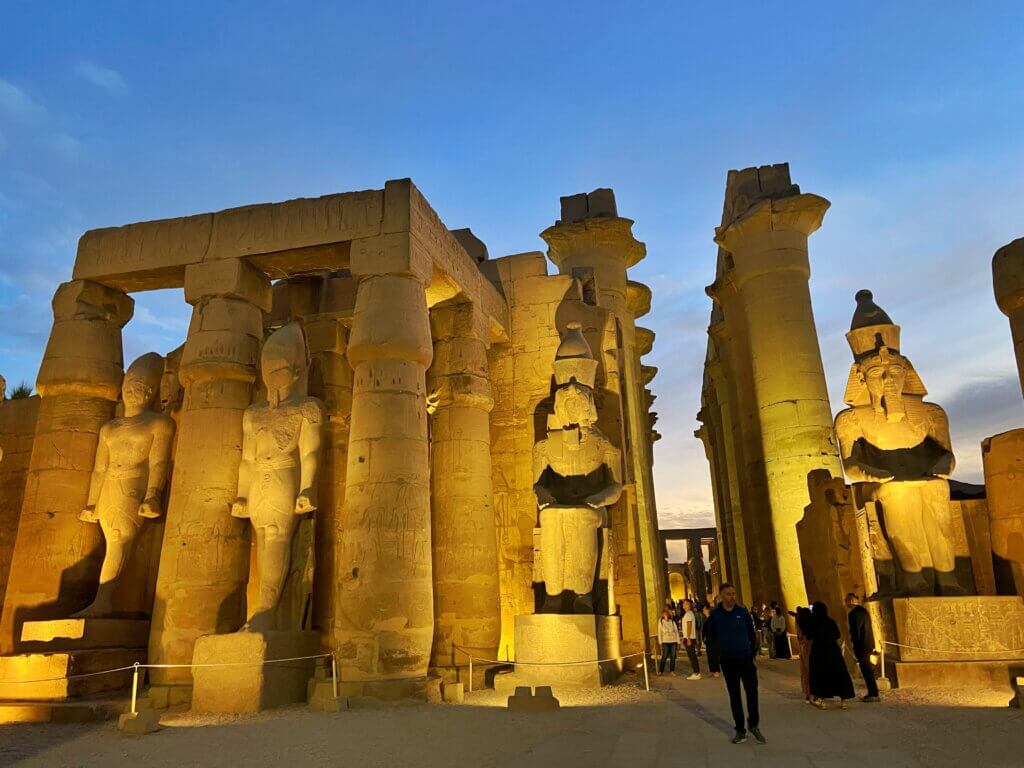
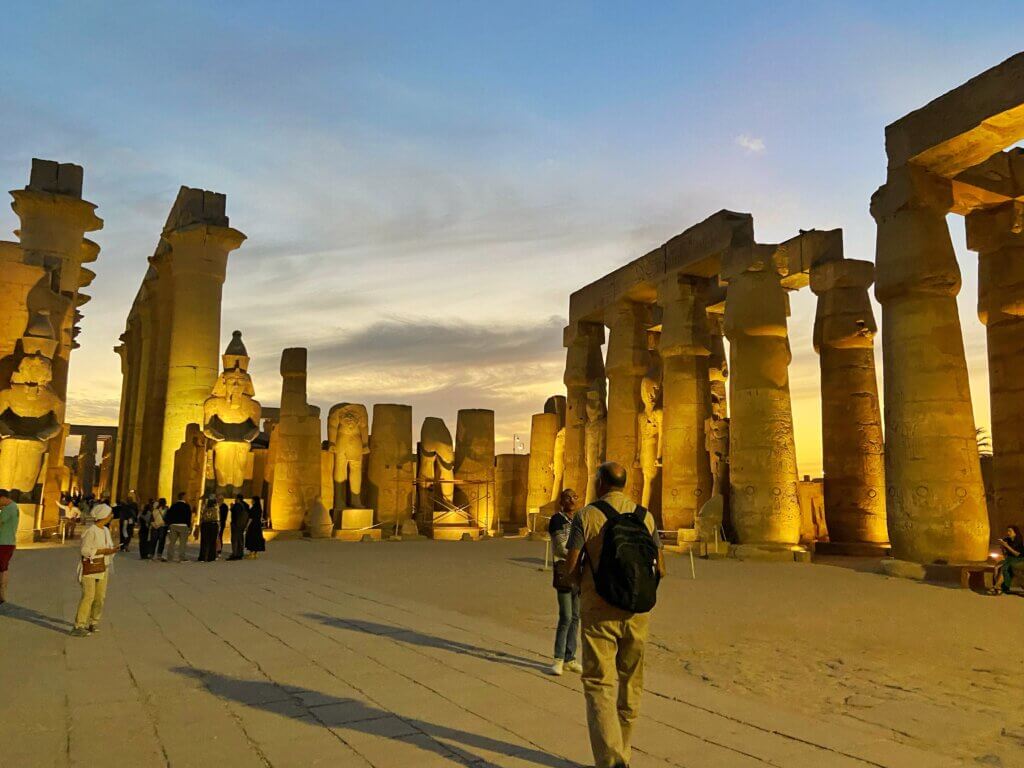



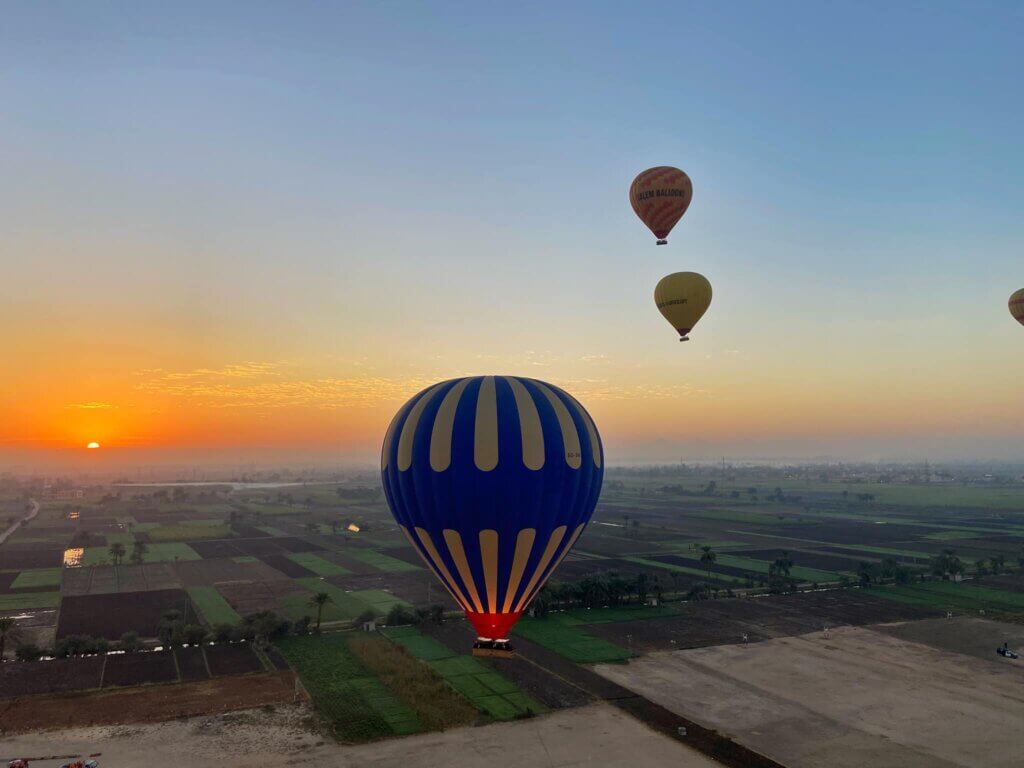
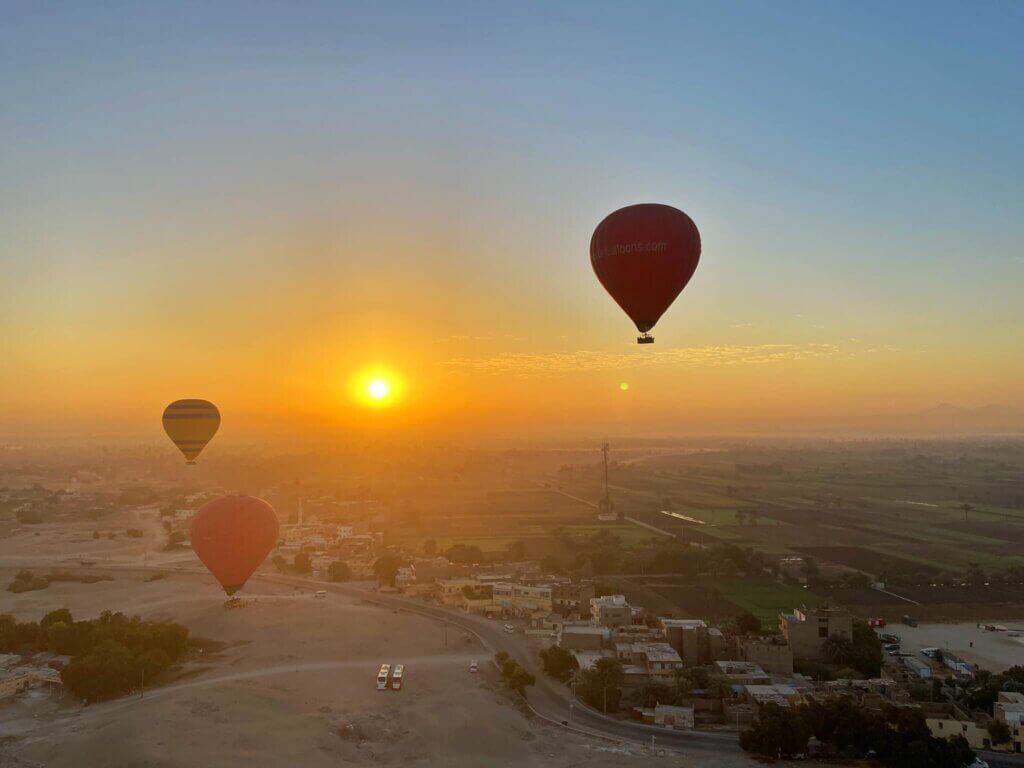

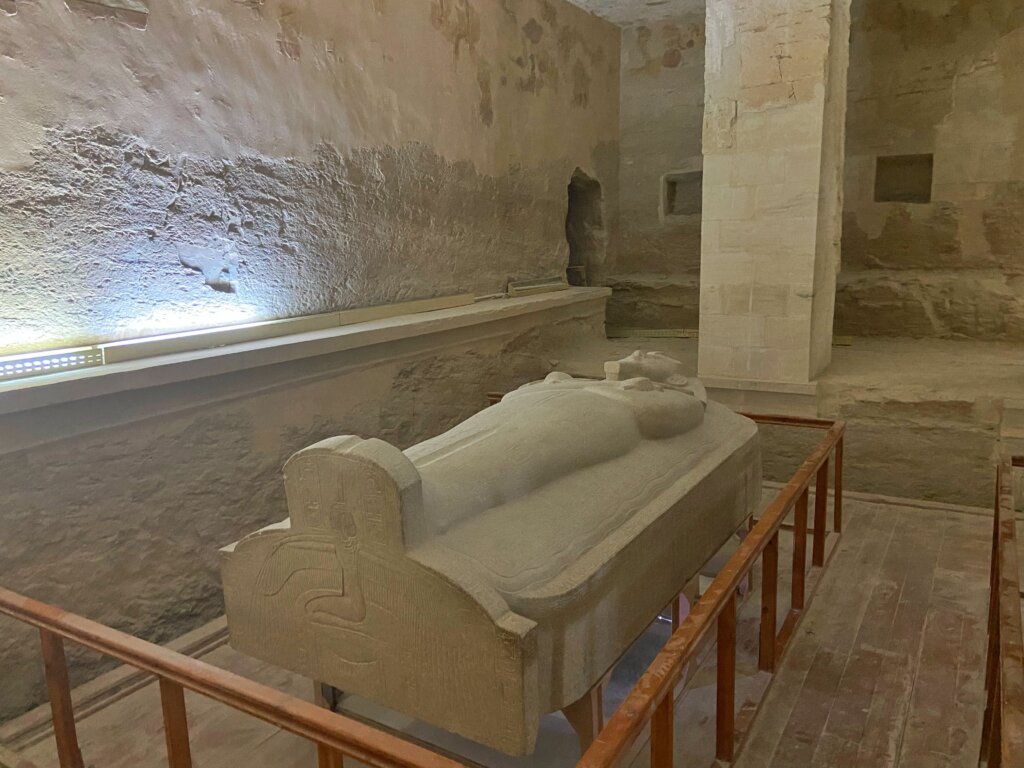
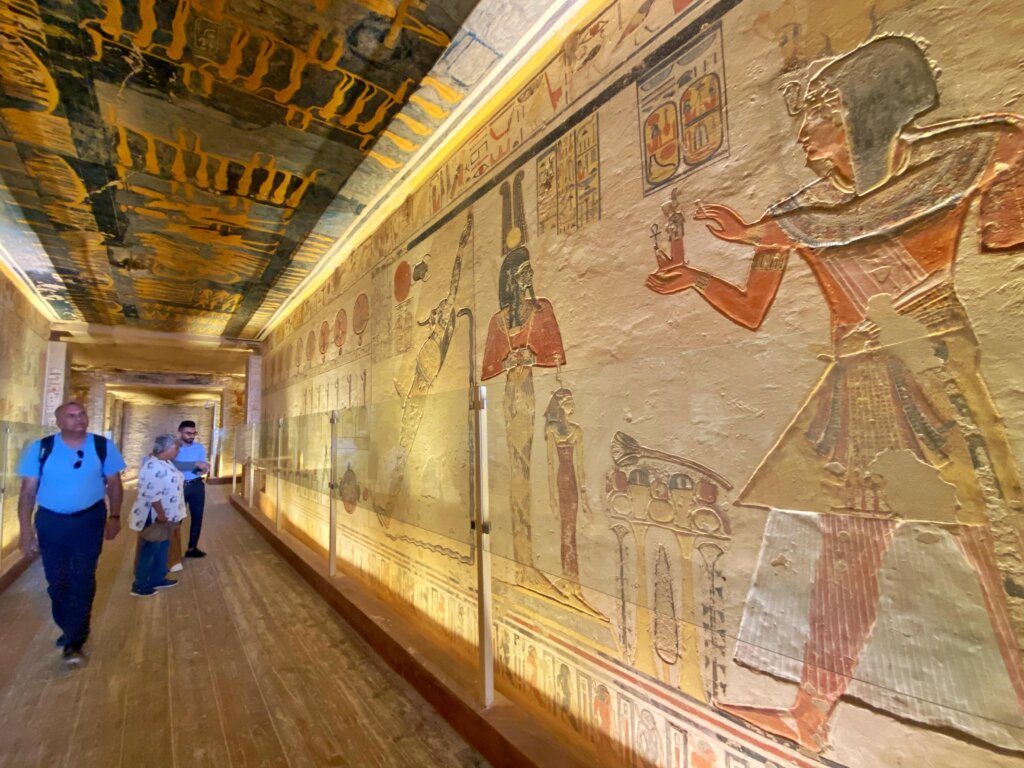

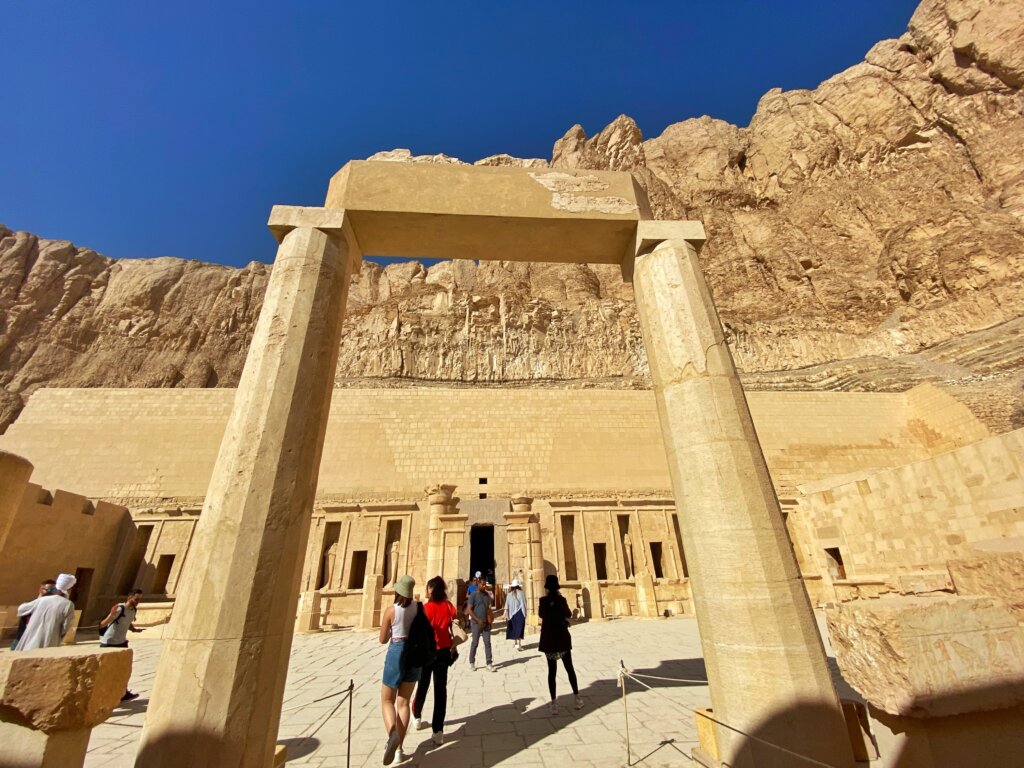
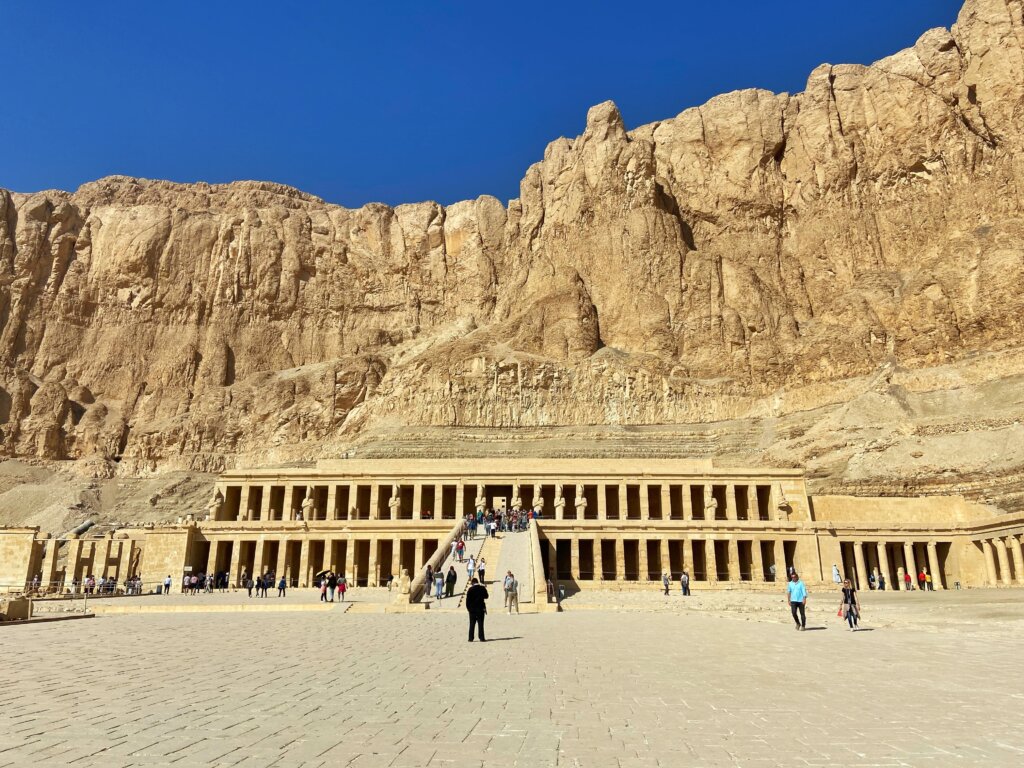
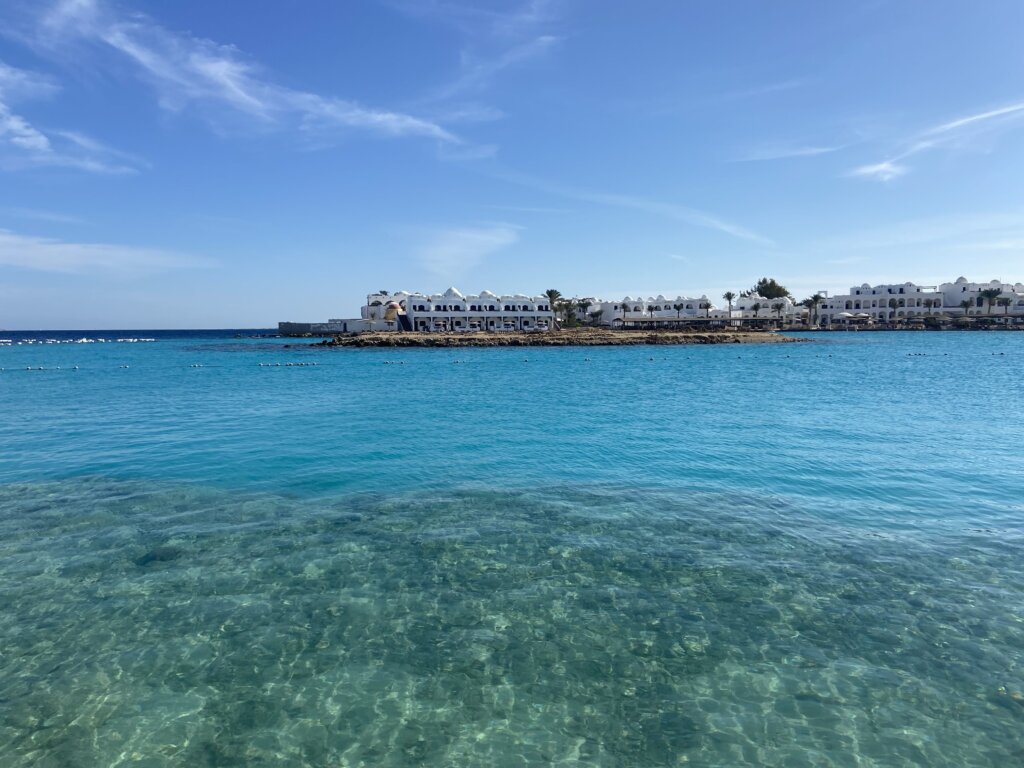
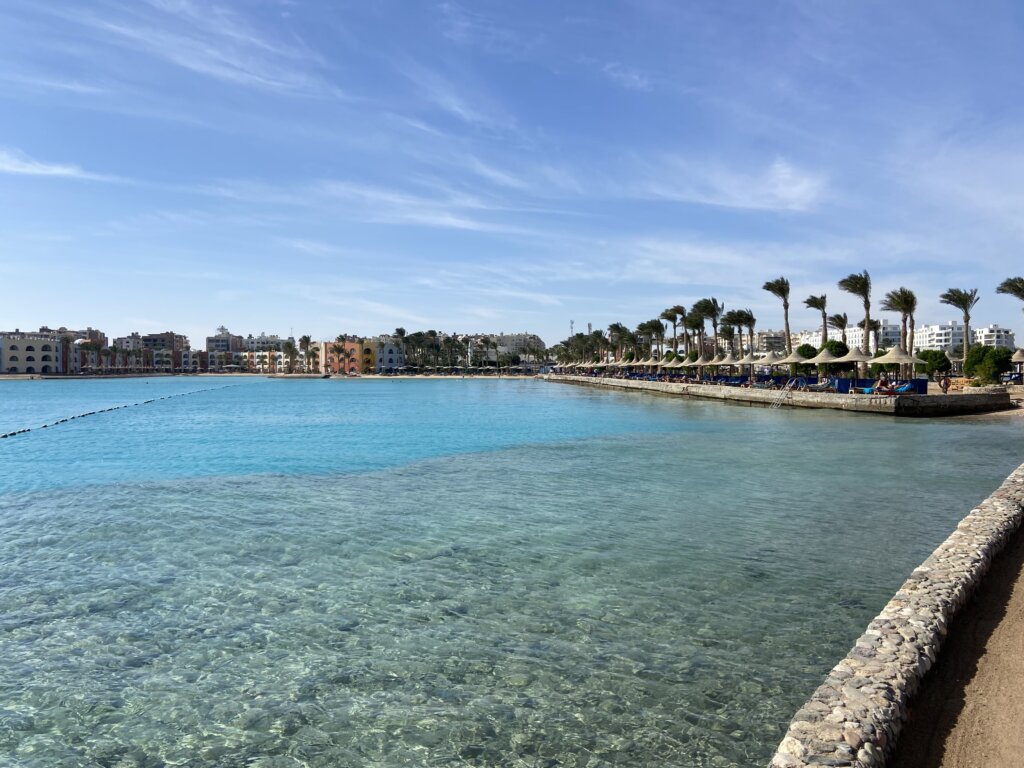


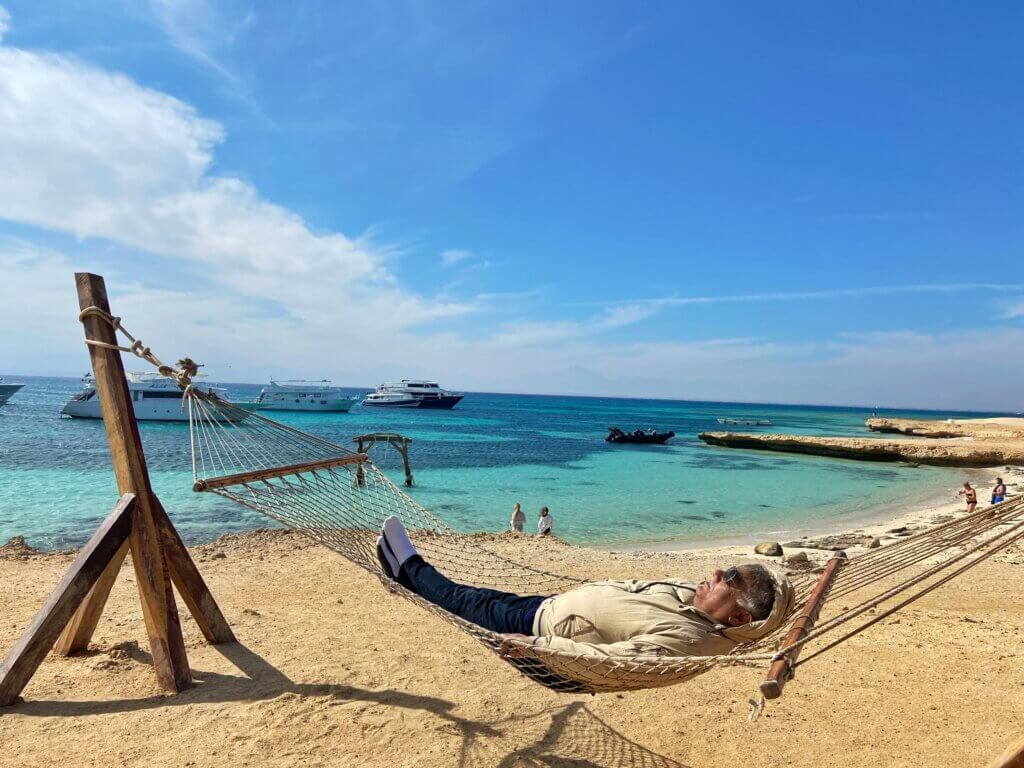
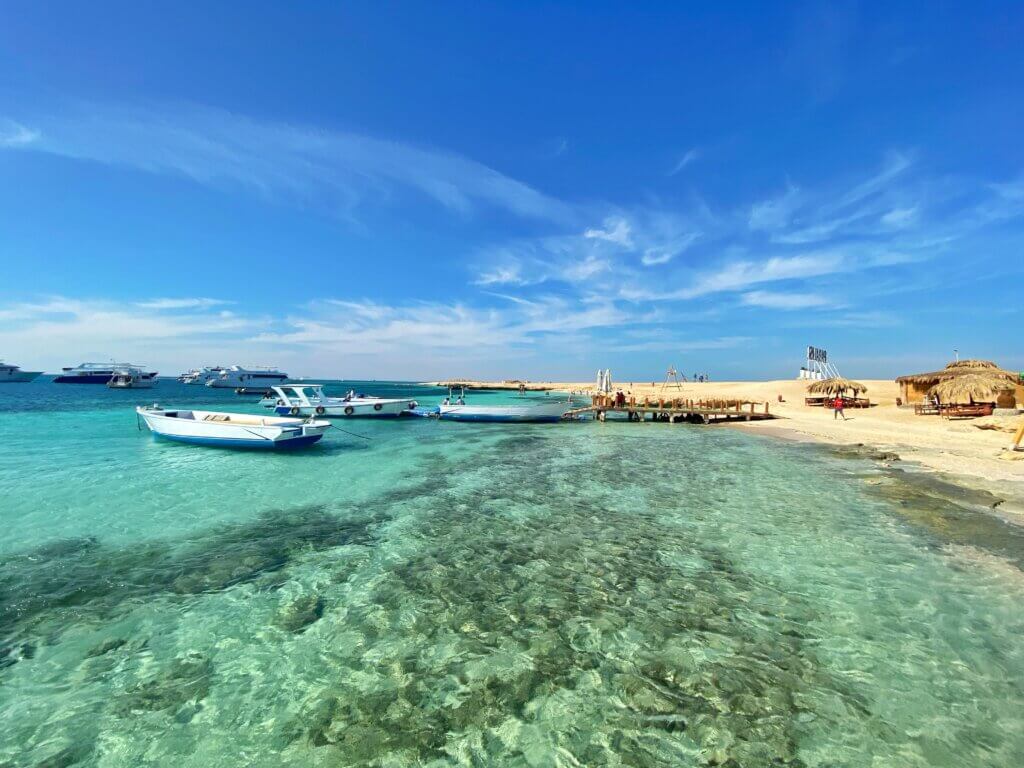
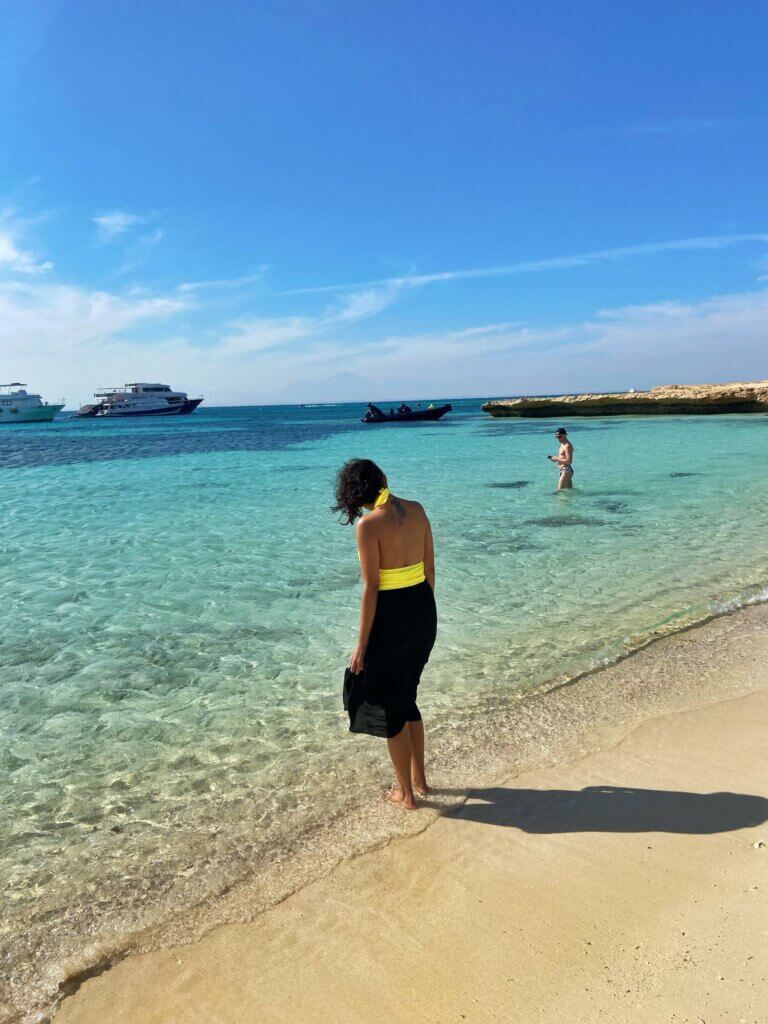
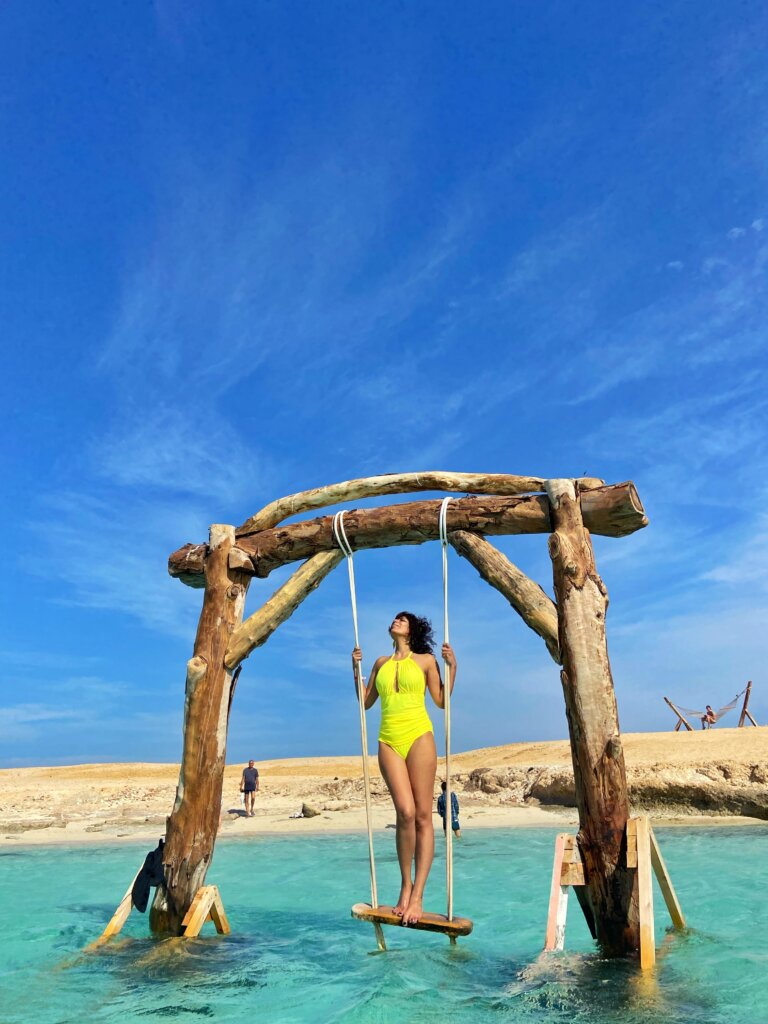





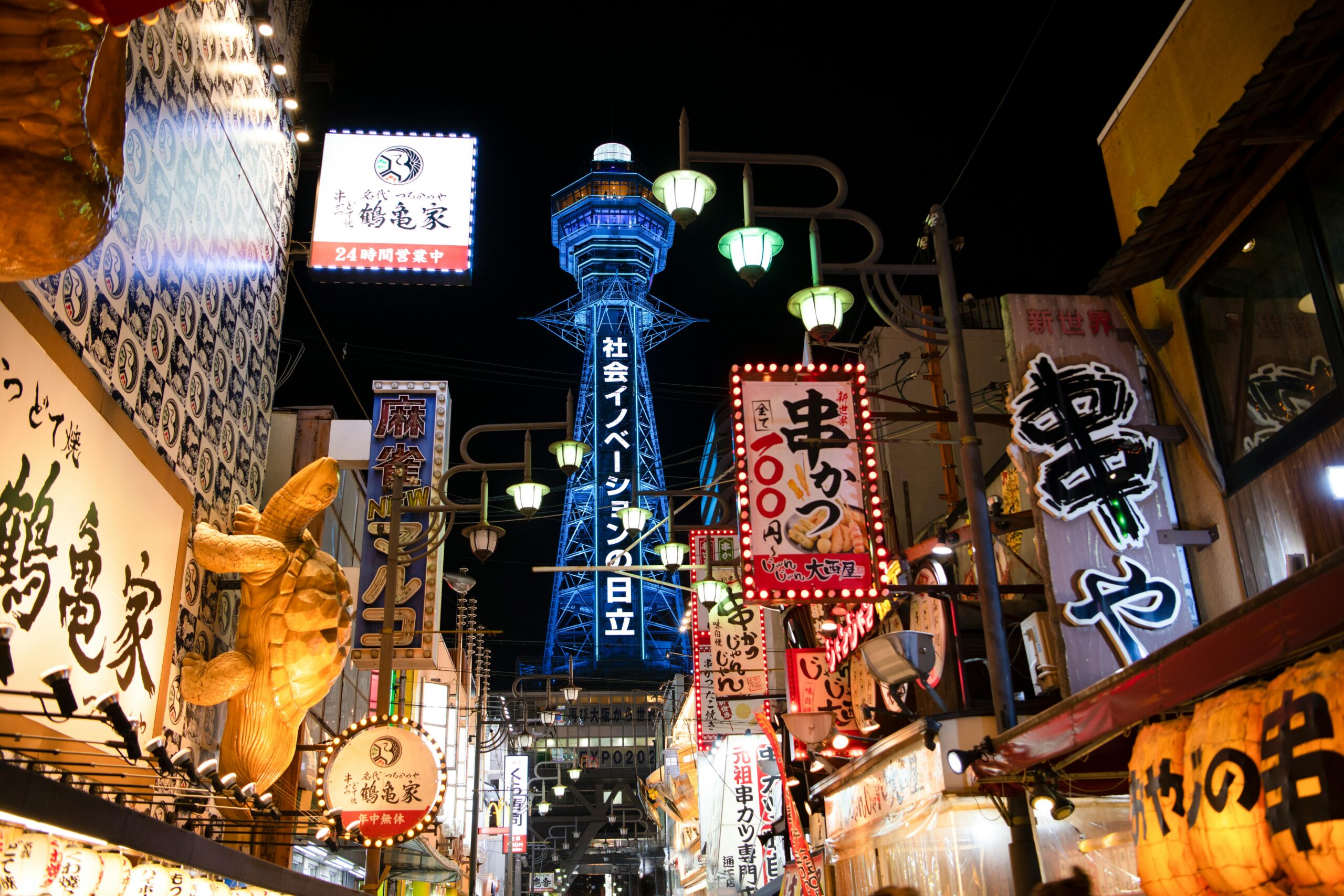
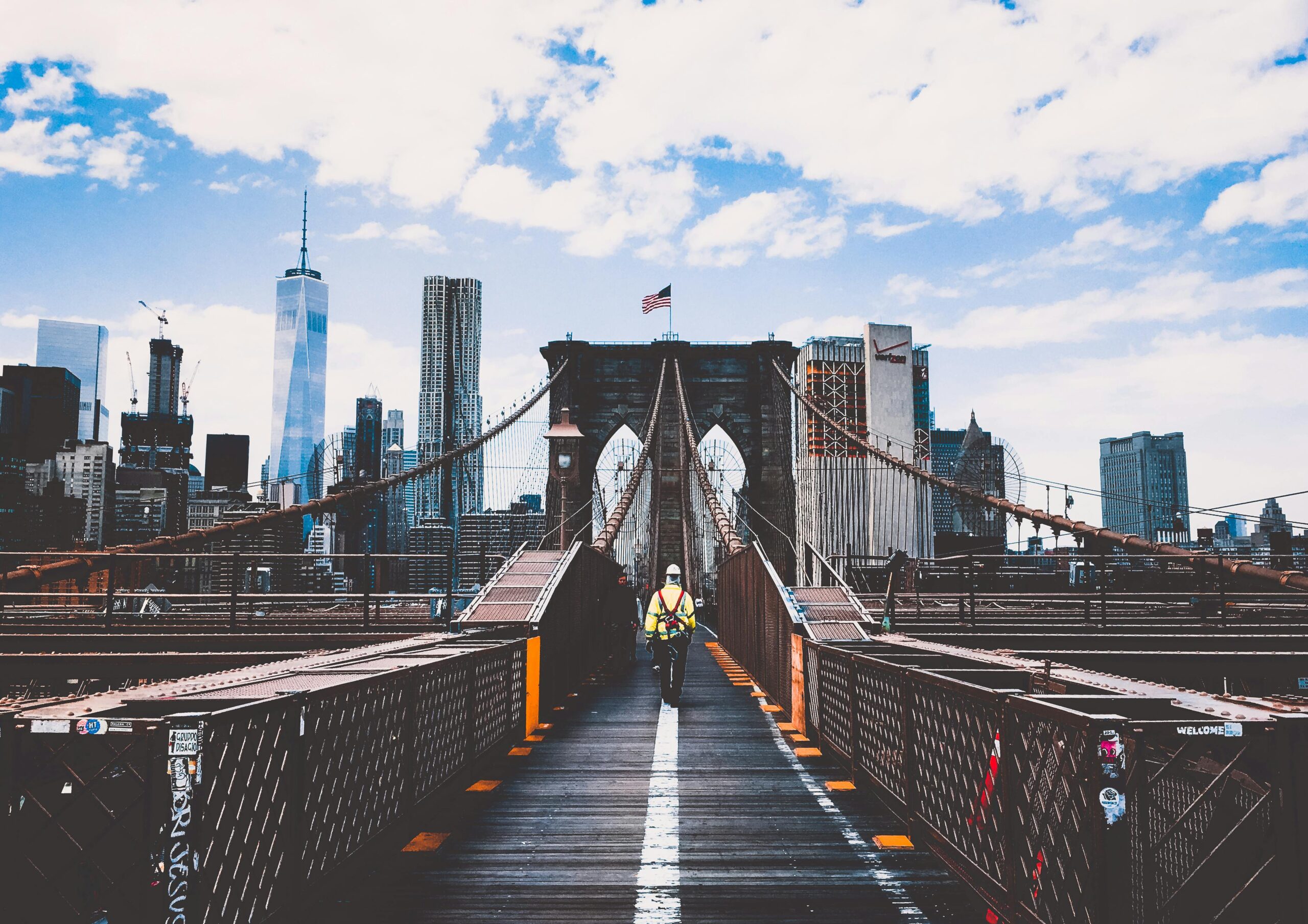







Jackson
Hi Medha, do indians get visa on arrival in Egypt.
Medha Verma
Hello Jackson. No, it’s not visa on arrival. However, you can get an evisa which won’t take more than 2-3 days.